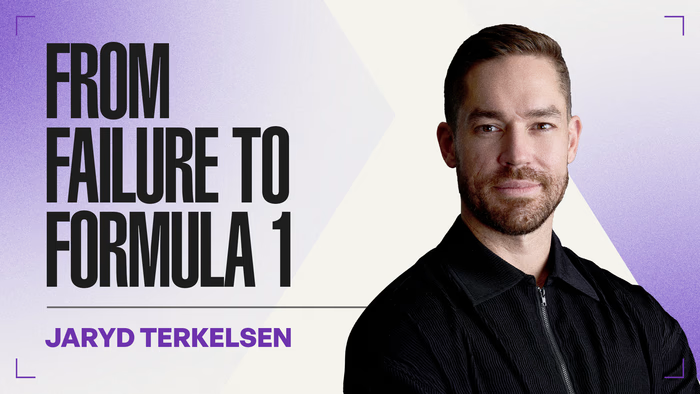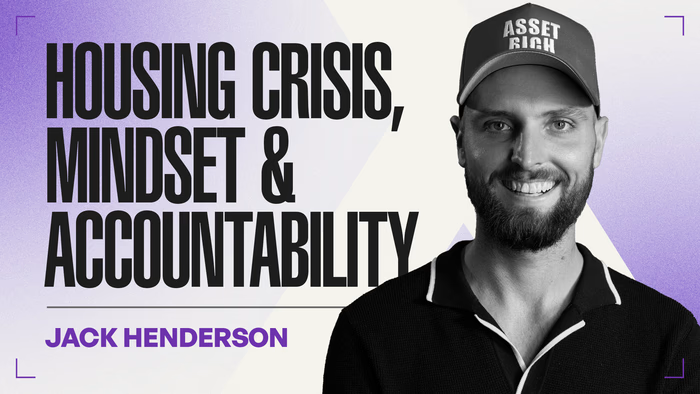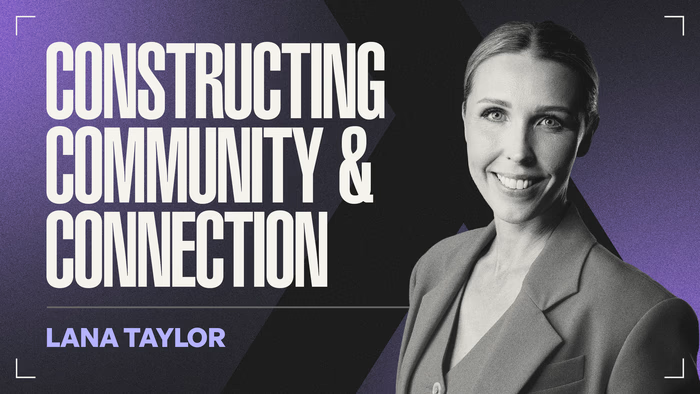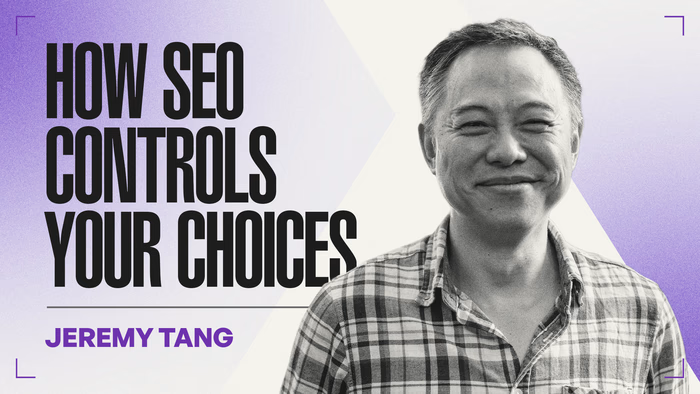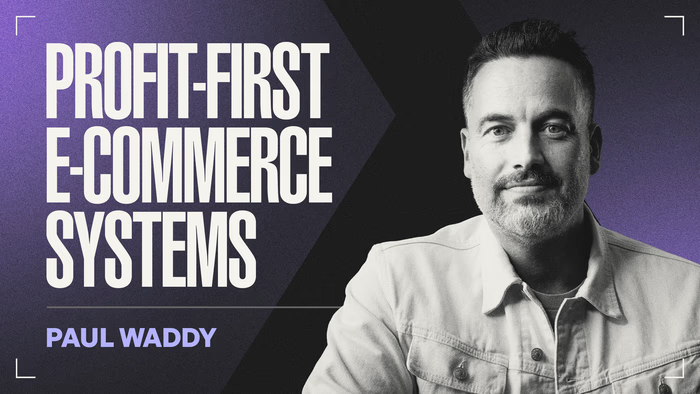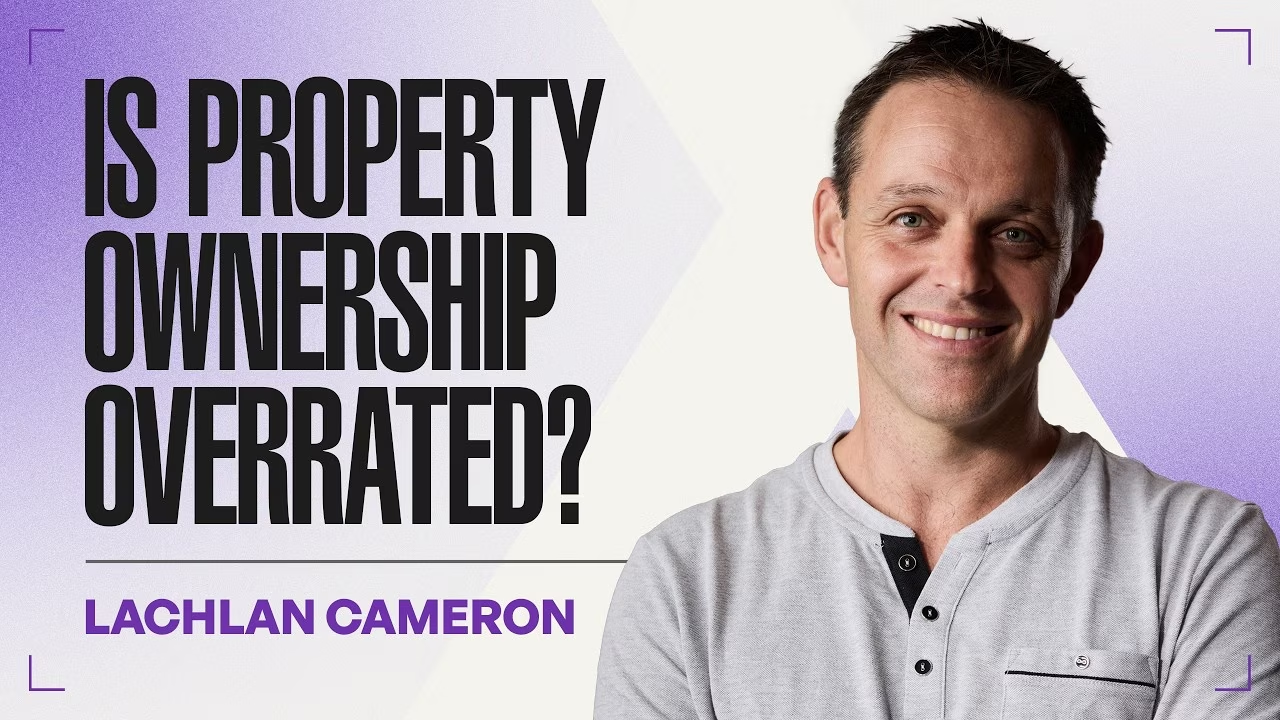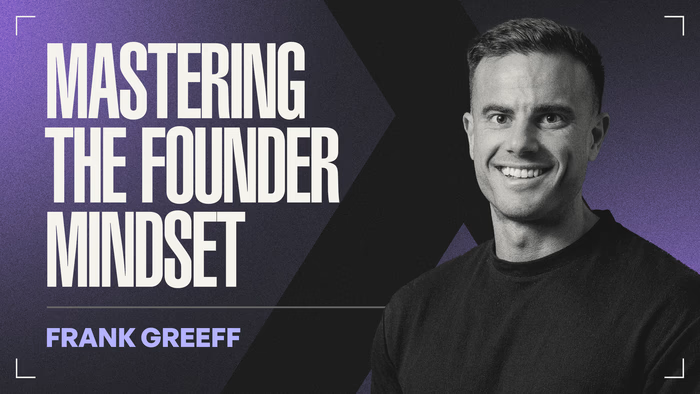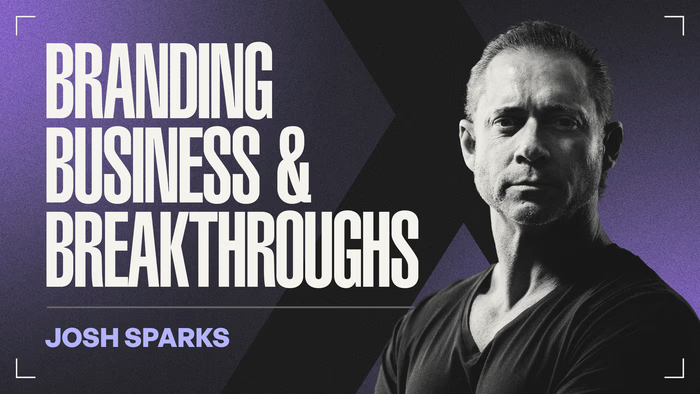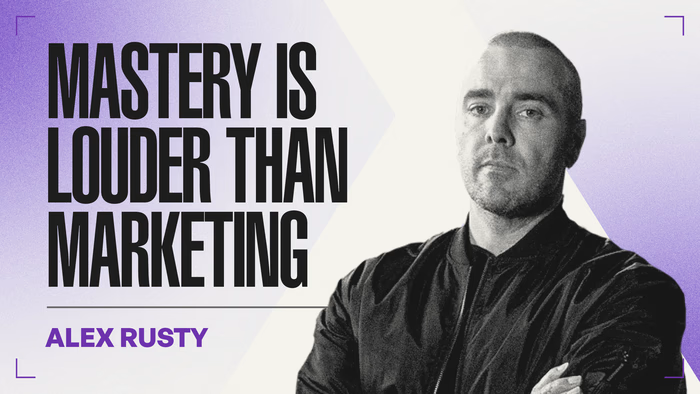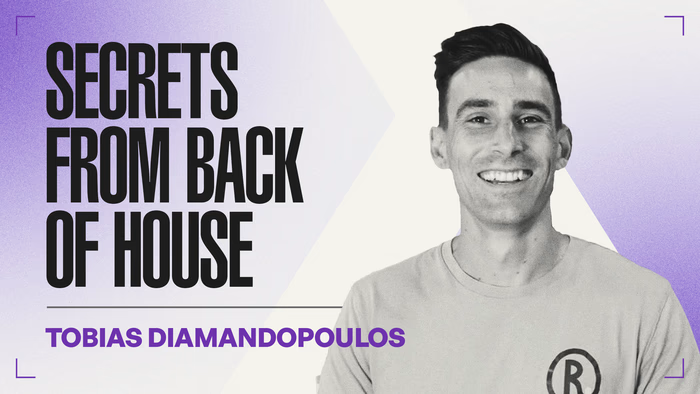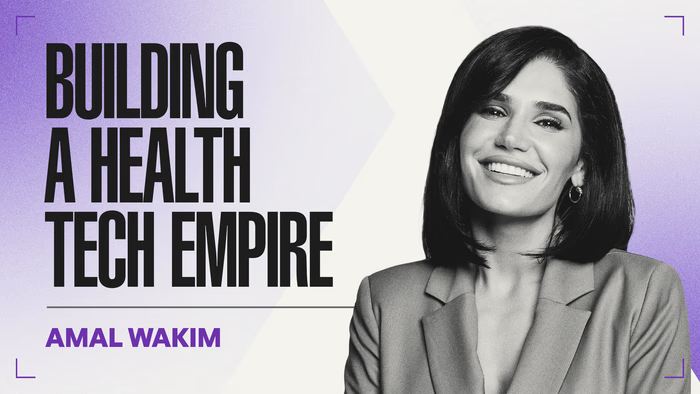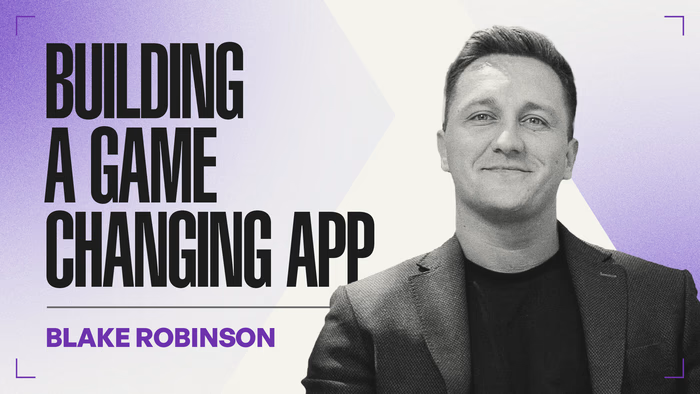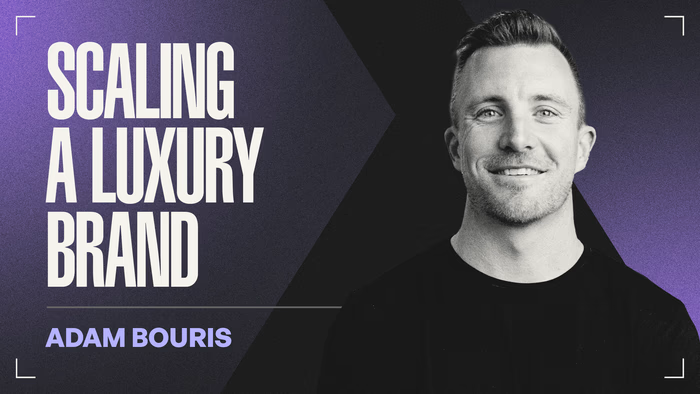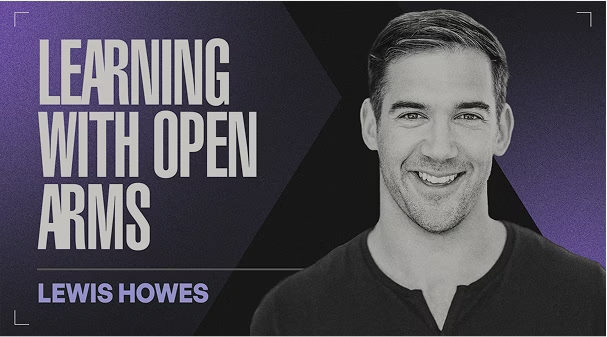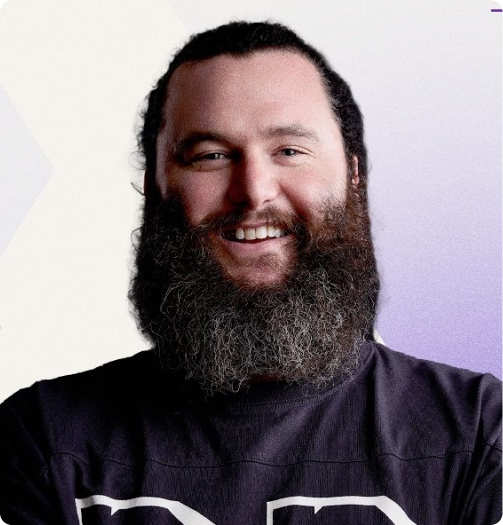


TLDR
Summary
Sindy Sinn is an Australian illustrator and designer whose work is instantly recognizable for its bold, handmade imperfections and music-inspired edge. Starting out designing for local bands, Sindy has grown into a globally sought-after artist while staying rooted in his DIY ethos. His artistic style thrives on “happy accidents” and raw textures, influenced by gig posters, metal artwork, and old cartoons.
In this conversation, Sindy shares how he balances creative integrity with client needs, categorizing clients into “pilots,” “co-pilots,” “attendants,” and “passengers” to navigate expectations. He stresses the importance of pricing confidently, educating clients about licensing, and building long-term value through limited-edition drops and direct-to-fan sales.
Sindy is entirely self-taught, having learned through real-world problem-solving rather than formal education. He champions simplicity and restraint in design, pushing for punchy, clever visuals instead of overcomplication. His career path has been shaped by persistence, agency, and the willingness to step outside comfort zones — from live art battles to large-scale murals.
Beyond the art itself, Sindy has built an ecosystem around his brand by outsourcing non-creative tasks, engaging fans with behind-the-scenes content, and treating process-sharing as both marketing and storytelling. He believes success requires obsession, discipline, and consistent effort — likening creativity to endurance training. For him, true agency means taking accountability, creating purposefully, and refusing to drift.
Highlights
- Handcrafted Style: Bold, raw, and imperfect — influenced by music, gig posters, cartoons, and Goosebumps books.
- Client Management: Uses clear communication, sketches, and alternative concepts to balance briefs with creativity.
- Client Types: Identifies “pilot,” “co-pilot,” “attendant,” and “passenger” clients to tailor collaboration.
- Self-Taught Approach: Learned by solving real project challenges, proving problem-solving beats formal training.
- Design Philosophy: Prefers simplicity and restraint — strong design comes from clarity, not complexity.
- Creative Flow: Relies on music, routine, and discipline to enter deep focus and maintain productivity.
- Pricing & Licensing: Advocates valuing work properly, educating clients on ownership vs. licensing.
- Ecosystem Building: Leverages big-name projects to grow his own brand through exclusive merch drops.
- Business Strategy: Outsources non-core tasks, manages direct-to-fan sales, and builds loyalty through mailing lists.
- Growth Through Risk: Embraces failure and discomfort as essential to growth, from murals to exhibitions.
- Agency & Obsession: Success in freelance art requires grit, ownership, and relentless curiosity.
- Content as Marketing: Shares process sketches, time-lapses, and storytelling to connect with audiences.
Transcript
00:00:00 - 00:01:02
for our viewers at home, like how would you describe your aesthetic and and your style? Uh >> Sindy Sinn is an illustrator and designer whose work has become instantly recognizable in music and pop culture. He's created bold, heavy-hitting artwork for global names like Disney, Spotify, Blink182, Fatboy Slim, and Queens of the Stone Age. >> I think the kind of artwork that I make is deliberately handmade. deliberately has like happy accidents and like it's got imperfections and
00:00:32 - 00:01:37
wobbles that I think make it interesting. Like the way I fit everything together is kind of like if you put jelly beans in a jar on a hot day and they kind of glued together a little bit. I never worked as hard in my life until I worked for myself because you have to prove. If you actually are brave enough to commit to going full-time with it, you'd be amazed at what you can produce with that time and that energy and that focus and the like hungry desperation. I love what I do. I don't actually
00:01:04 - 00:02:18
really want to scale that bad. I don't want to have a team of artists doing the fun for me. Uh, when I think of taking agency, I think of like not just floating, not just like being a stick in a river that just like ends up falling off a off a waterfall. How much of being an artist do you think comes down to just a sense of obsession? [Music] This episode is brought to you by Wix Studio. Sindy, you've worked with Theo Vaughn, Blink182, Disney, Spotify, Fatboy Slim, Young Henry's, Queens of the Stone Age,
00:01:47 - 00:02:45
just to name a few. Yep. >> Uh, all of which I love. And for our viewers at home, like how would you describe your aesthetic and and your style? >> My style has always been based around music. Music and like kind of booze, I guess, but mostly like kind of music and good times and like that. Like my aesthetic kind of comes from like kind of gig posters, mambo, like that kind of like all the heavy metal artwork and like that plus like you know kind of like uh what like the old cartoons
00:02:15 - 00:03:07
and Goosebumps books and stuff like that. It's this melding pot of influence. So that's kind of what my style has become is this kind of like kind of creepy creepy kind of creepy corporate monsters that kind of make their way into stuff. But I guess like I'll try I'll try and articulate the answer of like um >> well can I make a point on a few things I've noticed and again I never like to do this because artists have their definitive ways of which they like to come across but I think looking at your
00:02:40 - 00:03:37
work there seems to be these these like intense blasts of color but the way you balance color is quite interesting. Everything kind of feels heavy and weighty and slightly disturbed but also comic bookesque. So there's there's a nice like amalgamation of things that maybe have inspired you and I I think it really has its own unique style. When I see merch, when I see murals, I can immediately just go that's that's your work. >> Yes. >> I think like my back my kind of when I
00:03:09 - 00:03:54
think about like putting together a particular design, I have like a bit of a screen printer mind. Like I think of the layers of color. So I'll be like, "Okay, so the wall's black and then we've got all this, you know, white bits of artwork, whatever that might be. Plus, then we're going to do one more layer of the highlight a highlight color. And so, we're only doing two colors on a black t-shirt or something like that. So, therefore, I think of the same >> on on a t-shirt, you you're limited to
00:03:32 - 00:04:14
um how expensive it is based on how many layers, how many colors you use. >> Yeah. I mean, every color every color you add to a t-shirt design adds another screen. They have to make another another ink color that has to be mixed and added, which you could do infinite. But really, there's something kind of creative and cool about the challenge of just using two colors on a black wall, for example, or a black t-shirt or whatever it might be. And so kind of limiting the color palette means that
00:03:53 - 00:04:31
like, oh, the eyes have to be red now because the rest of the artwork is white and red on a black background. And the black obviously is not a color you've technically used. And that's how the a screen printer would think of like the base color as being a part of the design. >> The wall is a part of the design as is like a t-shirt. Like the black on the shirt should be the black and the character and so forth. >> Correct. On a black t-shirt, you wouldn't print black because there's
00:04:12 - 00:05:02
already black there. So, so you're kind of working around that. But I think that like I often like all these projects you've mentioned, each one has their own creative challenge that was at the time was like, okay, so like Theo Vaughn was a good example of like I'm a big fan of his comedy and I was excited for the tour and when I heard that I got to put together artwork for it. I was like the brief was, you know, he's quite self-conscious about how you draw certain parts of him or he's, you know,
00:04:37 - 00:05:34
the logo has to be this or the rat king was really a point they wanted to kind of push and there was there was this that the other. Every every project is a little bit different with what hoops and obstacles you have to jump through. It's not always my like my expression of my vision for the particular uh project, you know, cuz it's like you you have to kind of make sure you honor the brief and like at the same time during that process I try and maybe try and like wiggle with the rules a little bit and
00:05:05 - 00:06:03
see what I can get away with. Um, but I guess like the it's it's funny because like I think I think a lot of artists struggle with their particular style. Finding a style or a tone of voice can be quite difficult, especially like if you've got too much freedom in a project. It could be overwhelming. Do you know what I mean by that? >> I know. Yeah. It's almost like you can overdesign or you can overconstitute or over complicate or overuse title. If someone says, "We want a cat holding a
00:05:34 - 00:06:17
record and a cocktail and our bar name across the top," you're like, "I've got it." But if someone says, "Do us a t-shirt." It might take you a thousand t-shirts to get to that particular version, you know? So, you have to kind of I like to give them a couple of sketches and to kind of feel out the process. It's really good to kind of have a couple of emails backwards and forwards to kind of get a bit of a feel for them. I'll go deep through their brand, pull the whole thing apart, make
00:05:56 - 00:06:41
sure that I'm kind of honoring what they're about, their background, their message. if they've got like a little secret tagline in there, like for example, Theo, you know, in in the artwork, there's like a brick wall behind him as a rat. Uh, and I've included lots of little hidden messages on the brick, you know, like it's been kind of graffitied on there and stuff, which means that like when when his team see the artwork, they're like, "Oh, this guy gets it. He understands us. This is
00:06:19 - 00:07:12
awesome. We love it." >> What is it like working with clientele like that? Cuz obviously there's a particular brief, things that they're concerned about, maybe mistakes other artists have made. When you're in the mix with this, how do you how do you make sure that you're breaking the rules in a way that allows you to kind of have flexibility, but then also honoring the brief? >> Well, I mean, cuz they're all different. Sometimes the brief can be incredibly and and you almost can read it and
00:06:45 - 00:07:26
be like, I'm a fan of this, and that's not the brief. Like, that's not as a fan, that's not what I would want to see, you know? So, >> so like someone in their marketing department put a list together, be like, I know Theo. >> Yeah, I can kind of figure this out. It can be cool to come to like I I like to present them with like a couple of concepts and often include a bunch that they haven't thought of. And even if they've said, "Hey, we want one t-shirt.
00:07:05 - 00:07:50
Here it is." Yes, I will sketch that up and get that ready for them to see and to kind of start talking about, but I'll also go, I think we should do this. I think this is a better t-shirt. I think this is a stronger design. I think this is a bit smarter sometimes. But like, you obviously have to word that nicely so that you're not being um insulting. You don't want to tell clients what to do. But as a person who puts designs a lot of t-shirts and does a lot of custom artwork for people based around their
00:07:28 - 00:08:10
brand, you can quite easily sort of see like, oh, you're you're worried about things that don't matter. Like, let's let's just have some fun with this. Like, the t-shirt a t-shirt isn't your necessarily your brand. Same with a mural. It's not your brand. Like, it's this is kind of like a remix of your brand, you know? This is we're having fun with it. We've taken what you know, we've taken what's on the website and what's customerf facing and we're just
00:07:49 - 00:08:38
like mixing it up. Like it's a bit psych a psychedelic version of that. >> It's like a collab. So like the same way I don't know if you saw the collab between like Tiffany and Co and Nike or like Off-White and Louis Vuitton, it's like they bring interesting parts of both brands. >> Totally. And that could be really hard in that meeting if like if one if one team >> uh doesn't like let go of a certain thing like if if Nike said it has to have the tick right in the middle you
00:08:14 - 00:09:02
might be like oh this is this is going to be a bit clunky. You actually need people to kind of let go a little bit sometimes and then you can kind of steer the ship in a way that's but you can always kind of steer it back if you need to. You might you might get some sketches and be like we want to we want to see a bit more of the brand in there or something like that. But I guess like the brief the brief can be some some brands will come come up come forward with like a really really detailed brief
00:08:38 - 00:09:24
of what they want and that can be quite restrictive sometimes because you're like this is exactly what you wanted like is this right? Like is are the bricks in the right spot? Whereas when they're kind of a little bit hands off that's when you get to kind of go and have some fun and come up with something wild. >> And and I like what you said there about like the client gives you a brief you show them something close to the brief and then you're like this is what you asked for. I put this together, just
00:09:01 - 00:09:50
want to show you this. However, I've also worked on something I think is better because then you're like basically um you know, fitting their appetite, right, with with what they've requested, but then offering an alternative which when it's executed might look way more impressive than the original. >> I think so. Yeah. I think it's like using some like initiative and it's almost like going like um it's like Yeah, I guess so. Like I don't like uh it's it's the only way I can describe it
00:09:26 - 00:10:09
is being like um sort of like not caring about the brief. So, they'll give you the brief and you have to obviously honor that, but then also at the same time being like, what would I do if I could do anything? Like, what would I if if there were no rules for this, what would be the best t-shirt? Like, what's going to sell the most? I'm using merch as an example, but like what's going to sell the most t-shirts to your audience? And it may not be what they've asked for. And like a good example of this
00:09:47 - 00:10:44
that probably sounds more more positive, I guess, would be uh I just did a project for a bar in Salt Lake City called The Green Room, who were like, "Hey, we want to hire you. We love your stuff." Uh, we want these two t-shirts. First one is this. Uh, it was literally a cat holding a record and a cocktail with our bar name across the top. The second t-shirt is going to be a record as a character like the old mascot, you know, kind of Disney kind of man. >> Yeah. >> Um, we want to get one of those and
00:10:16 - 00:10:56
like kind of if you could just kind of boo do some sketches. Let's see if we're into it. Like what's your process? And I was like, sure, this sounds good. Here's the two you've asked for and here's a third which is the a portrait of the front of their bar. They have like a really nice clean look in front of their bar. Uh, and I'd put like an old school boom box speaker out the front of it like they're having like a street party. Like a kind of like a rad, you know, the
00:10:36 - 00:11:20
kind of spot you'd walk past and and hear hear a party and be like, "Want to go in there?" Cuz when I looked on their website, everything looks like there's a party in here. Come inside. And so I just was like, I think this is I think this is it. I know I'm quite good at drawing buildings and shop fronts and stuff like that. So I was like, I'm just going to chuck this in here and see what they think. And they were like, we want all three. Like this is this is perfect. Rad. Like cool. We didn't have to fight
00:10:57 - 00:11:45
about anything. It was all creative. It was all uh it was basically just about being like, I think this is the best solution to what you want, which is you want to sell some shirts to people that like your bar. Like, let's do that. And then >> there's like a bug you get when you um when you create something and you see you see someone's li eyes eyes light up because you're like, "Oh, I got it. I It's almost like a little puzzle you solve." >> Oh, and it feels good in that to send
00:11:21 - 00:12:13
that email with that extra design attached. It's like, man, I live for this This is good. Like, they're gonna like I wish I could be a fly on the wall on their end when they open it and be like, "Holy shit." Because I mean, sometimes what happens, I'm at a point now in my career as an artist where I feel like I can I sometimes skip sketches and go straight to straight to like this is good to go. Like I I understood what I understand you. I understand the brief. I understand what
00:11:47 - 00:12:48
you want. Here it is. And and we'll deliver like near final artwork. I don't mind. doesn't take too much more work to kind of design something tight than it does I mean it does but like part part of me likes uh impressing them with like something really really strong to see in the first round of of emails because I feel like it sets up the um I'm trying to like I guess like a thing that sometimes happens is if I send someone a really rough sketch I'm trusting them to imagine what it's going
00:12:19 - 00:13:07
to look like and I've had this happen before which is to send someone a pencil sketch and they're like, "Yeah, but no, but it's it's gonna be blue, right?" And you're like, "Yeah, but it's a pencil." So like like you see what like this is just the ability, >> no, but I wanted a house. And you're like, "No, but this is a blueprint of the house. It will stand up, you know, like they don't it's like almost like you're trusting them to kind of fill in
00:12:42 - 00:13:37
the dots." So sometimes like uh sometimes I'll pick a particular part of an illustration and I'll draw that like it's finished and the rest will be rough as Um but I do like to give them like this is another whole side thing but it's like I like to give them a little bit to kind of play with because I do notice that like a lot of clients like to have some input. They want to play with it. They want they want to be a part of the creative process. they want to, you know, they want to think
00:13:10 - 00:14:02
about things and come back with some thoughtful notes and stuff. They want to be included. So, whenever I kind of see whenever I get the gist that that's the kind of client that I've got, I'll try to give them something to kind of play with, which is good. >> I we have a kind of a like an idea or concept here at Rival, which is like there's like four types of clients. There's the pilot, co-pilot, >> the attendant, and the passenger. >> 100%. >> So, like the pilot wants to control
00:13:36 - 00:14:20
everything. The co-pilot wants to be involved. Almost like they're the decision maker. Then the attendant just wants to help. Yes. >> And then the passenger is like, "You deal with it. I'm here for the ride." >> Yeah, man. 100%. You get like the kind of client that wants to go like, "Oh, can we just jump on a call and just brainstorm like some ideas or something like that?" And my like my response to that now is like, "No, I don't really want to do that." I guess I guess
00:13:59 - 00:14:43
because that sounds like something you should do like that sounds like something you should do in your own time when you're feeling creative and not try and force that into like a half an hour phone call with me where like we might not land on something like go and like we should both go and brainstorm some and you might think of something really cool in the shower and like I don't want to be in the shower with you, you know? So like just like write it down and like email me, bro. I'll get
00:14:20 - 00:15:08
and when I get to it I'll we'll open it and we can talk about it, you know? But I guess like um and then there's the other kind of client who wants to come and sit behind you and kind of like watch you kind of watch you kind of do things. So maybe wants to like be a part of the day-to-day hour by hour process. But I mean luckily with the studio we don't have too many people coming in you know we kind of just lock the door. But I guess like this is you'd have this with any any industry anyone that works
00:14:44 - 00:15:30
for themselves. But like you do tend to find uh the red flag straight away and not necessarily just red flags but what kind what you know I recognize the kind of client you are. I recognize what's going to happen. I recognize this, that, the other. And you're able to uh immediately answer that. You can answer those questions before they've asked them kind of thing. And kind of be like, oh, I can tell you're going to be concerned about it could be something like something as simple as, oh, they
00:15:08 - 00:15:48
want to make sure the pro, you know, when you look at their Instagram, you're like, oh, these guys want to see process sketches that they can share. Like they want a photo of a hand holding a pencil sketching the artwork. So they can share that saying a teaser of, oh, we've got some new artwork coming or we've worked with this local artist to produce some artwork. So and be like, "Hey, just so you know, in the included in the in this whole project is going to be some like process stuff."
00:15:27 - 00:16:25
>> Yeah. I think often times when people begin their journey as a freelancer or in the creative space, they think it's a conveyor belt, but it's more of a haphazard warehouse where anything can kind of go in any direction at any given time. But I I just want to like slightly touch on like some of the framing around like um uh pricing and like perception and like how to really I guess set oneself up as a as a freelancer, as a creative. Before we really unpack that, I want to know how did you begin to open
00:15:56 - 00:16:51
doors at this level? So when you're working with big bands like Parkway Drive or a Fat Boy Slame, like how how did this really unveil itself? because I imagine there was a time where things weren't really clicking the way you might had hoped, but then all of a sudden you you had a reputation get and the word getting around town. So, how did you open doors at this level and really start to catch these types of clients? >> Um, it it was really slow to be like on the inside. It was a slow and steady
00:16:23 - 00:17:17
like laborious uh a lot of a lot of like time wasted on projects that I could do so so much faster, so much better. Now, it was a long slow thing of working with local bands, working on local posters for, you know, little events here and there. I used to do monthly posters for a couple of venues where they'd send me everything that month and I'd come up with a different thing. And it was always a lot of work and I was very slow, but I loved it. I was having so much fun. And with whenever a job came in, I was like
00:16:50 - 00:17:46
complimented like this person likes my work enough to hire me to make some artwork for them. Like, yeah, let's do it. Like, so I kind of gradually kind of pick and choose what I started to work on. And over time, the bands slowly got better and the bands got bigger and the bands introduced me to another band that needed some artwork. And the bands again, they put out an album and they want some album artwork and the album goes well. And then they're like, "Dude, we're going on tour. Can we get some
00:17:18 - 00:18:16
shirts? Can we get this?" And it very very slowly built up from working with my mates who are in local bands to the local pub to the local hey you know the guy here actually runs like a t-shirt brand around the corner and you know hey I actually could use some artwork for my local you know literally like a plumber or something like that wanting some artwork and then someone sees that and they're like hey we we want a shirt and it was like this um little spiderweb of like each each job led to another job.
00:17:47 - 00:18:34
When I look at my portfolio, I think of like each of the clients and each of the projects as being like a giant kind of spiderweb. And how does that kind of connect to me being >> so this client like introduces to these people and this band project fled out this way? >> Yeah. Like for example, like the new bar in Salt Lake City, the the green room who I was just talking about like uh like I will use them as a connection of a spiderweb to reach out to more more locations in Salt Lake City saying like,
00:18:11 - 00:18:59
"Hey, I just did some artwork for this rad bar down the road. Let's do some let's do some artwork. Let's do some together. Like this would be really fun." And A big part of my brand has really been the outreach. >> One thing I want to I want to unpack here and I think this might be an interesting way to look at it is like like okay for example you're selftaught and I think when people are self taught they they tend to look at things that they're obsessed with or they tend to
00:18:35 - 00:19:31
pull inspiration from. Now you mentioned Goosebumps you mentioned like Ben posters and Mamba like how did this path shape you? like if these were like different um clumps of clay kind of like molding you like how how did this all kind of really honestly come together? >> It I mean I for a long time there I was I was working just doing whatever I could. I was a roadie for a long time. I worked with a lot of bands on tour and just trying to you know doing every odd job that I could to get through. But I
00:19:03 - 00:19:48
was always drawing on the side. I'd have I'd always go away with a sketchbook with me and just fill it with skulls. I'd fill a page with like melting warpy skulls. Um, for a minute there I worked in a call center and just spent every second of the day on the phone just just drawing monsters and just slowly coloring it in and having having just doing it for fun. It was >> You were obsessed. >> It's all I wanted to do. It's all I wanted to do. And when people asked me
00:19:25 - 00:20:17
to design something for them or to draw something for them, it was like the biggest compliment of like, holy like the fact that you would trust me to do that. Sure. Like I'll figure it out. I'll do anything to figure it out. I think if I had have gone to an art school, I would have rebelled and just gone this and just tried to take everyone to the pub and try to sneak out. I think the fact that I had to actually figure out how to do each problem as it came up. So if it, you know, in something like Adobe
00:19:51 - 00:20:38
Illustrator, like designing something as vector artwork, soon as you learn, as soon as you find yourself in a bit of a problem, you're like, I have to Google this and I have to go down a massive 2hour rabbit hole trying to figure out why these anchor points aren't connecting. But when you do find an answer, you're like this is I've solved this problem now and now I've got a keyboard shortcut that that like solves that for the next time that happens. And like I feel like I've now had every
00:20:14 - 00:20:51
problem that I could possibly encounter with the design with, you know, the design process. >> That's such a good point because design is problem solving. A lot of people don't realize this. A lot of people think it's just draw something and you're like, "Hang on, like what's the problem I'm solving?" >> Exactly. And then if you have a tool bag of tricks of like all these different things you've learned through problems you've been faced and then overcome, you
00:20:33 - 00:21:18
start to like stack the combinations together to get the outcome. >> I think that like I think the fact that I had to sort of figure it out myself meant that I actually learned it. And I think if someone had have given it to me on a print out saying this is the process >> we're going to learn about da da da da da with anchor points, I would have been like boring. But when it's a problem that you're like, man, I'm trying to actually finish this so that I can send this off so I can go to print so that
00:20:55 - 00:21:47
you know these bands going to have some this band's going to have some shirts for their tour. You're like, I have to figure this out. So uh and you also just learn little t like learning a little tiny solution like something like something very very niche inside Adobe or Illustrator or your wakecom tablet or how you're all how you're all set up like fixing a little tiny a little tiny thing like for example like the settings on your wakecom tablet then you know the the tablet that you literally use to
00:21:21 - 00:22:12
draw into the computer even just like there's so many settings in that there's so much sensitivity in that like not to mention the the weird coordination of drawing ing on a flat surface in front of you whilst looking at it at a different like at a different um dimension if that like a different um aspect. >> I I played with one when I was like 13 14. I found it too weird >> as opposed to an iPad where you're drawing straight on the screen. So like a tablet might be down here on the
00:21:47 - 00:22:38
screen anyway. Um like figuring out how I like to work and having everything kind of set up so that every time a job came in, I wasn't trying to like reinvent everything. I wasn't experimenting with my style. I was going straight to the design process, straight to figuring out what the design was going to be and how we were going to make that as strong as possible rather than trying to figure out software or trying to mix paints and come up with some new color. It was like, no, we're
00:22:13 - 00:23:03
going to not experiment with stuff. We're going to get straight to straight to building if that makes sense. You know, if you're if you're going to build a house, you're not out here like making bricks. Buy the bricks and you make the house and you make it. That's where the creativity comes in. you're not like clogged up in details of like uh little tiny little tiny things of trying like again with the style it's like I already know I already know how I like to draw things. How do I draw
00:22:38 - 00:23:39
something that's going to be really punchy, really clever and really uh how do I simplify this as much as possible so that we can be super confident in like the simplicity of what I'm handing over? And it actually can be quite a weird thing. It takes a long time to make something look simple because uh every the the more simple a design is, the more every little line actually matters because you see every little detail. >> That totally makes sense cuz because you you're taking something like we we also
00:23:08 - 00:23:53
have this debate here with the the design team cuz it's like >> there's there's a there's a there's a point by which you overdesign. There's a point by which you just go off a cliff and you do way too much stuff. The stuff that screams that's really loud and really pops is like usually the simple things. >> Definitely. And I like that this is a like here's an an argument we could have forever, which is like what is the best artwork, you know? And like it doesn't
00:23:30 - 00:24:30
it doesn't really exist. Like the best artwork is kind of a myth, you know, cuz like if it's is it more complicated? Is it more complex? Does it have more colors or more lines or shading or something? or is or is like the you know or is just like whoever can kind of deliver the message the like the cleanest way is that you like the challenge really isn't to be complicated which I think when I first started I used to add lots of stipple and lots of like lots of bits of shading and I thought that by being uh by having it
00:24:00 - 00:24:56
being quite complex that it was better >> and over time I've realized that just being really confident with like a short Like it's kind of like a word count. If you can say the same thing in less words, you know, not a specialty of mine. I'm a bit rambly sometimes, but like if you can deliver something as punchy as possible with as few colors and as few lines and shapes as possible, it's like you've it's almost like you've summarized it to its pure like, you know,
00:24:28 - 00:25:22
>> you've shown restraint, but you've also shown confidence and and it's it has room to breathe and it I don't know. I I >> I'm a big fan in like confidence in simplicity. So being able to like deliver something that is incredibly punchy that nails the brief without being overboard or like wasting a bunch of frills that don't actually deliver anything to that outcome your level of >> complex and that's kind of become my style is how do I how do I like dumb
00:24:54 - 00:25:49
this down I guess without it being dumb you know I want it to be how do I make this as simple as possible so that um the artwork is still rad everything is still there but I'm not like over I'm not overworking the concept and like you were saying about you can overdesign something when I often when when that happens with a project I'll notice like you know if you're getting into various versions of artwork when I go back to V1 of the artwork it still has that kind of like sketchy kind of punk rock feeling
00:25:22 - 00:26:17
sometimes of like a sketch can have real energy because it's like it's got like impulse like it's got like it's been uh worked on quickly with a rough hand it hasn't been like overconsidered and that same thing can happen with overdesigning by like too many people involved in a design design process like the committee design by committee kind of thing where you suddenly start trying to please everybody by do you know what I'm talking about with like adding let's oh what if we did this or what if we you
00:25:50 - 00:26:38
know oh the demographics actually say that we should and it's like sometimes it's like man just do us just do a flaming skull put your band name over it we're going to be sweet >> was there a defining moment where rubber really hit the road where you worked on a project and you know one minute like you said you're at a call center sketching Skulls and Monsters. Next minute you're designing a, you know, a t-shirt for a big band. >> Yeah. I like I remember Well, I remember
00:26:14 - 00:27:09
the day I like left my job and I went full-time freelance as an artist because it was incredibly terrifying. I had about 10 jobs lined up at the time and I was like, I think I'm going to be okay. Like there's going to be some money and it's going to I've got but I'll now have time to work on these projects. I was really curious what it was going to feel like to suddenly spend time on something that I always squeezed in, if that makes sense. To like try and I was always working on projects at night. Uh like I
00:26:42 - 00:27:29
work had a day job and I'd come home and I I had like this old wooden desk and I had a this little gray lamp and my thing was when I come home I'm going to make dinner as fast as possible. I'm going to get a beer and a coffee and a jug of water and I'm going to get some snacks. I'm going to get all my on the table and I'm going to turn my lamp on and when the lamp's on, I'm going to work on it and I'm going to be I'm going to like switch on. When the lamp's on,
00:27:05 - 00:27:58
I'm on. And the lamp was like this kind of like weird thing that I had of like um turning turning creativity into a muscle as as something I have to do. I'm going to stay awake all night working on this I'm not going to waste time. So, the lights on, we're on. Let's do this. And then suddenly it'd be 5:00 in the morning and I'd try and cram two hours of sleep before work or something and I was useless at my job. >> Now, now take me into that because a lot of people debate flow state. So some
00:27:32 - 00:28:16
people wait for inspiration to hit them. H how do you stay in a constant flow state or do you not even agree that that's a thing? >> It's definitely a thing. I I don't know if like I don't know if I necessarily feel flow state, but I get in the zone like I get in the bubble and there are different for there are different kinds of bubble. Like I would break up a project into like, you know, maybe two or three different chunks. Like when you're first looking at what you got to
00:27:54 - 00:28:48
do, you have to brainstorm like what is what are we actually doing here? Like what is the best idea for this? So I've just finished uh the poster artwork for Blink182's Huntsville, Alabama show. Right. >> Okay. Take take me right through like phase one from the brief right to the execution. >> The brief is Blink 182. Here's the show details. Uh, here's a few things they're trying to avoid because they try to go through phases of artwork. They didn't want to use the kind of skull. They got
00:28:21 - 00:29:03
like a happy happy face. They didn't want to use the happy face. Uh, and they wanted to avoid uh like overuse of uh the bunny. >> Yes, I've seen a bunny a lot in their >> So, they were like, "We've just done a few bunnies." Actually, it's not even so much about like not liking something. It was probably more about them being like, "We've done we've had a few too many bunnies." So, I was like, "That's cool. We'll dodge all that." And then they go
00:28:42 - 00:29:23
like, "We need sketches by this date and final art by this date." So, >> okay. So, they give you the deadline, they've given you the brief, the things that they don't want you to do, >> and I know it's a poster. So, I have the spec, I have the spec, the client, and some of the details. I know where it's going to be. Obviously, I've never been there. Um, but I was like, "Cool. It's an American, you know, an American poster for their one of like it's on the
00:29:03 - 00:29:41
Missionary Impossible tour." >> Wow. >> So, they were like, "Cool, go for it." And you're like, "Rad." So, the first thing I usually do in that situation is I'm like, "Fuck yeah, we're working on a cool project. Let's do this." I'll chuck on some Blink when I needed to on the, you know, I'll chuck some Blink on the stereo, get a bit of vibe going for myself, maybe in the earphones if there's people around. We kind of, you
00:29:22 - 00:30:20
know, work that way. Then I'll create like a folder of reference and that'll just be like what's everything Blink's put out over the last uh year of artwork. Like what kind of I just want to see some of the stuff so that I'm not doing something they've just done. I want to make sure I'm doing something that's the ne the next step so that it it all evolves so that I'm contributing to uh the future as opposed to an more of the same. I went deep researching the venue and the city and Huntsville's
00:29:51 - 00:30:40
often called rocket city cuz there's NASA and there's a bunch of like rocket sites there and a bunch of cool things. So I was like man we got this. >> So you're looking around for like landmarks culture and the zeitgeist and what people know it for. Yeah, >> the the context of this is that the audience uh people who like Blink182, probably very similar to myself, who listened to them when they were growing up and are still like, "Fuck yeah, I like this band. I want to go and see
00:30:16 - 00:31:11
them now. They're bigger. They're tighter than ever." But they're locals for them. That's a local show, right? It's like me going to see the Hives tonight. Like, you know, it's the same thing. So, they're what I wanted to do was to honor the city they're playing in without it being like super cheesy, right? So, uh the sketch that I put forward to them was a grim reaper riding a rocket and it's like shot off out of the earth and then there's like planets and aliens and
00:30:42 - 00:31:39
kind of going on around them. Um the sketch that I sent them, the the actual like Grim Reaper and a part of the rocket I drew quite tightly in the style that I wanted the whole thing to be. Uh, and the rest was like a like a crayon sketch, like a left-handed like idiot kind of sketch of like rocket here, flame here, planet planet, like you know what I mean? But I'm like, here's here's a bit of it drawn quite well so you can kind of get a flavor. >> So like, let's just say 10% of the post
00:31:11 - 00:32:03
is kind of like finished and you're you're leaving the sketch to so that they can fill in the rest with their imagination. >> Correct. It's like um it's like as if I've I'm I'm not I'm not trusting them to fully imagine what it's going to look like, but I'm showing you a little glimmer of like just like here's a one slice of the pizza has been fully cooked. Clients want it all. A slick looking website that can run their business and scale with their success.
00:31:37 - 00:32:50
Wix Studio is built for that. Plan out your client's whole site in seconds with AI powered site mapping and wireframing. Then when everyone's on the same page, jump into the creative. Starting off in Figma or in the Wix Studio editor with super precise layouting tools like grid, stack, and flexbox. Go above and beyond the brief with no code animations, custom CSS, and built-in business solutions. And make your whole vision responsive in a click. And there's zero need to break a sweat when clients grow
00:32:13 - 00:33:21
fast. A dynamic CMS with global design settings and reusable assets lets you turn one page into hundreds. Design smoother and deliver sooner. Go to wixstudio.com. So I jump in and I finish the rest of the artwork. I put blink on in my headphones. I get in the zone, right? And for something like that, I literally am like, cool. I go in that morning, go into the studio. I know I'm working on it that day. And I'll have a usual morning, drop my kid off at school, walk walk to the studio, get a coffee, hey,
00:32:48 - 00:33:38
how you going? How you, you know, bit of this, bit of that, but then I sit down and it's like straight in the zone. And I know I've got until 4:30 that day to just like completely smash out this artwork. And the idea being that I finish it, but it might take a second day or it might take a third day depending on what the project is. For that particular one, it was already laid out. So I'm not thinking about the creative process of like what goes where. I'm like looking at a rough
00:33:13 - 00:33:51
circle thinking I have to turn this into a planet, you know? It's not >> Yeah. So you kind of >> there's like the layout there's the layout brain and then there's the actual like building it brain. So it's kind of like if you had to think of it like architecture versus building building the house, you know? So it's like I'm at that point I'm like following the plan. >> So like with like this makes sense to me. So like uh let's just say we're
00:33:32 - 00:34:14
building a house. Stage one is like you send a draft. Yeah. you kind of like roughly sketch like it's going the house is going to point in this direction. It's going to have a balcony. It's going to it's it's got all the things it's about to have, but it might not be the perfect execution. >> You send that out. They give you a sense, >> but I can kind of imagine it. I'm not like sending it to someone else where I have to explain every like I know that I'm going to be building this as well.
00:33:54 - 00:34:39
So, I know that it's kind of my shorthand for things, you know? So, like, you know, Saturn is like a circle with a flip with a with a hula hoop around it. >> Sketching it. That's done. And so you're kind of laying out a draft, >> correct? >> And then um you finish a portion of it so they can see the actual fullyfledged execution. So then they can they can fill in the blanks themselves and then you wait for response. You go back and forth. Yep. >> Um and then once you get a green light,
00:34:16 - 00:35:13
you just roll it out. >> Correct. So then I like >> fit execute the rest of it. It's like today's today on the on the cards is just doing this. And that is almost like a turn my phone off, get fully in the zone, load up a couple of podcasts, load up some music. I'm like you and that like I like lots of background music. Sometimes I'll have like a podcast and music slightly dimmed underneath it. I've got I want like that like I need to bombard myself with stuff so that I just
00:34:45 - 00:35:29
uh I don't know what it is. It's like a weird working in silence is nearly impossible for me sometimes. I don't know. You got to be crazy to do this But I reckon like if you don't enjoy if you don't enjoy the process of of actually working on something like that then it's going to be a really it's a really hard job you know like if you don't enjoy the slog uh it's that I mean that's when I'm talking about this like some there are some days where I don't
00:35:07 - 00:35:53
feel it there are some days where I find it really hard to concentrate not I don't feel like I don't want to do it I mean like uh my focus is gone and I'm like okay I have to I mean today's an admin day let's do it emails or something like that and I'm like it's just uh takes a minute sometimes but Nine times out of 10, I can get myself straight in that zone. Once everything's there and there's some music and something, I'm ready to go. >> Now, you have a brilliant analogy to
00:35:29 - 00:36:30
explain the concept of value. And you talk about the $150 project versus the $5,000 mural. Um, why do people assume higher price equals better quality before anything's even done? One of the hardest things I think as an illustrator artist is putting a price on your artwork because and this is a thing you hear I've spoken to lots and lots of people who are artists especially China figuring it out and and a thing that comes up is how do you how do you figure out your pricing and actually like if
00:36:00 - 00:37:04
you if you had to think about it yourself if you were putting up a a painting at home in your in the entrance to your house do you want do you want to like skimp on that you know like is that how important is this to you? You know, if this is if you were presented with two options, are you going to choose a $10 painting or a $10,000 painting? And whatever you just imagined, the $10,000 painting is better because the $10 painting uses materials and it was rushed and there was no real thought to it. and that guy is doing something else
00:36:32 - 00:37:26
that day, you know, whereas the $10,000 artwork has been done with intent and premium materials and it was delivered and it was wrapped and it's, you know, there's like a level of care that I think goes into that and the price can literally translate to that. But I think that like uh the pricing yourself as an artist is is hard because especially for me, I'm a people pleaser, you know? I want to I want to when I'm quoting, I'm like, "Oh, that seems too high. I should bring that down." And so we're mates,
00:37:00 - 00:37:49
you know, don't think that I'm trying to take the piss, you know, or something like that. But I guess like >> uh I now know how long things take me and I now know the value that I can bring. >> Uh if it's a t-shirt, I know that we're going to sell shitloads of t-shirts and I'm not a cost. I'm I'm a I'm a blip at the start, but you're about to you're about to make 50 times that back, so don't even worry about that. Whereas with a mural, it's like, cool, how much
00:37:24 - 00:38:17
money you spend on the sound system for this room or the, you know, the the paint for an entire building? It's like, why is why is a mural suddenly a cost and not actually like investing in an asset into the background of your business, you know? Actually, this is going to create the vibe for anyone that walks into this room. Not to mention, it's a backdrop for everything that you do. Not to mention, it makes you guys cool, you know? So like I guess like trying to figure out the sweet spot of
00:37:49 - 00:38:47
uh how much time can I spend on it and reciprocally via that is like what price can we put on this artwork? How can we value this? And I don't think it's taken me a long time to realize that clients don't value cheap artwork. The output's not not necessarily the same if something's been rushed and if and if you're worried about moving on to the next thing too fast for an artist. Is it about the I guess the framing of helping a client realize or appreciate the fundamental
00:38:19 - 00:39:10
value of something beyond them fixating on price? Yes. Well, you'd be you'd be surprised because the bigger the bigger a client, the more that the more they've got their together, the less they kind of care about the price. You if you kind of come back with something reasonable and you go like, "This is what I think this is worth and this is how I think this should be done." you lay out a bit of a a bit of a blueprint for this is the process for this particular project. Suddenly, they'll be like, "Yeah, it's a
00:38:45 - 00:39:31
shitload of work and you're going to do a good job. Let's do it." Like, great. You don't have to worry about talking about it for too long. Whereas, I think like it's usually a client who maybe doesn't have too much budget or is worried about uh the wrong things that maybe is worried about trying to save money on artwork, which it is it's a luxury item at the end of the day. So now with usage like uh if if I were to think of a a metaphor and I I heard someone share this where they said let's
00:39:08 - 00:39:59
imagine you're Dr. and some up and cominging artist who's unheard of, what's up? Uh, some artist who's up and coming and unheard of says, "Hey, I need you to help me make a beat for my first track," >> the distribution of that new artist is unlikely to go viral. Whereas, if you had someone like, let's say, Eminem, who's like, "Hey, we're about to drop our eighth studio album. I'm double platinum." >> Yeah. then you're you're you're looking
00:39:32 - 00:40:26
at the impact of the artwork versus um I'm just going to charge them the same rate. It can be really it's it can be like quite a complicated thing especially to a client who's that this isn't necessarily part of their vocabulary and it's like an analogy that I sometimes use. Okay, here's one uh an apparel brand who makes they make rad like retro style bodies. They wanted a repeat pattern of like skulls and daggers and cool right? And they were like, "We want to hire you to come
00:40:00 - 00:40:51
up with like this rad aggressive patent of your your style. You know, we'll put your name on it, blah blah blah, but we want you to design this pattern and we want to print it on board shots. Let's talk about that." I was like, "Cool. Here's my rate for that kind of artwork. I'm going to supply you with a print ready PDF plus some process content of what it looked like coming together. Maybe a bit of a time lapse, maybe some sketches, whatever. This is the rate." And they go, "But we want to own the
00:40:26 - 00:41:12
artwork. we want to buy outright. And you go, you don't need to buy it outright. Just print the shorts. Like this is the this is all factored in. I've got the design fee plus a usage for you to print the shorts. Here we go. You're good. And they go, no, but we want to own this. To have to explain to them like it's like an analogy that I sometimes use is like a house. Like you can rent a house or you can buy a house. And if either way, you can live in it. You can invite your friends over and
00:40:49 - 00:41:41
have a party. You can eat dinner. You can sleep. You can shower in that house every day for as long as you want. As long as if you're renting it, as long as as long as you're paying, you it's good. It's your house. But you can't renovate it and you can't sell it. And like you can't add a bedroom or a pool. And if you want to paint it, you have to call me cuz it's it's mine, But if you buy it, it's going to be more expensive and you can do whatever you want with. And I think
00:41:15 - 00:42:02
sometimes clients think they need to own it to you just to use it and it's an an unnecessary cost. There are other times where they think maybe by buying it they're getting it exclusively. And maybe I might be like, "Dude, let's just add a thousand bucks and I won't sell this to anyone else." But like, it's still ours. Like, you know what I mean? Like, I don't want to be removed from this. I don't want you to like turn this into another. I mean, if you own the
00:41:38 - 00:42:35
artwork, you could take that patent and collaborate with Coca-Cola with your brand and I have nothing to do with it. You know, that could be the focus part of a massive campaign that I've got nothing to do with. It's fine as long as they've kind of mentioned up front, hey, we want to do some crazy with this artwork and we want to buy it off you so we can do that. In which case, I'd probably be like, sure, fine. The whole the payment structure for every project is slightly different. The Blink 182 poster design,
00:42:07 - 00:42:57
I get paid per sketch. So, they, you know, we work to we work together fairly regularly, me and their record label and the management team. They like every time I submit a considered sketch, so if I send two, three sketches, I get paid per sketch. It's not a lot, but it's enough that I get to actually spend some time coming up with a concept, putting some time into delivering something that they can present makes their job easier because I've spent time making it look decent and not just a bit, you know, a
00:42:32 - 00:43:15
bit of scrap paper or something. This is actually like this is the first step in the project. >> You've ideated and and done a sketch and you get paid per sketch. >> Correct. Yeah. I mean, without taking, you know, I'm not going to send them like 10,000 sketches, but like, you know, like I'll send them like two or three or, you know, or sometimes just one if I'm like, this is it. Like, let's not around. And then once they've approved the final design, there's a
00:42:53 - 00:43:55
flat rate, which is, you know, an amount that we've worked on in the past. Win-win. We're all happy. Plus, I get 10% of the printed posters from the show, plus a designated shout out from Blink182 on the Instagram. So that so blink will promote the posters that are available for that show. They will then say extra posters are available from at Sindy Sinn and I then on my website I'm posted I'm posted in the mail 10% of the screen printed posters that they produce for that show and I get to sell those on
00:43:24 - 00:44:21
my site for whatever I want. And so say they produce 300 posters for the event, you know, I get 30 sent to me and I get to sell those for let's say 100 bucks or if they're signed 300 bucks, I don't know, whatever. If they're foils or like a limited edition print, even more, whatever, and I get to kind of maybe maybe sign them myself, do like a little artist a little artist print run or like, you know, one of 20 of whatever I've got, one of 30, whatever it might be. Um, some artists don't like this
00:43:53 - 00:45:00
format because when you actually think about it, some it really does sound like we're going to pay you with your own art and that can confuse artists as to what they're signing up for because they're like, "No, no, no, no money. We want money for job, not don't just send me your you know?" But actually to get to get those posters from the band and a shout out that you have the overflow, that's super powerful. So now I have uh a million fans potentially coming from their Instagram to my Instagram, my
00:44:25 - 00:45:14
website to see to to buy the poster that's hopefully available or whatever you know the stock inventory whatever you know sell as many as you've got basically. But now they join my ecosystem, my website, my universe where they can see my other shirts and my other prints that I have for sale. You can build a little cart. Doesn't have to be just a blink 182 poster. I've got other posters there. So, they can, you know, they might be able to buy some other things, whatever it might be, I
00:44:51 - 00:45:41
then have to take care of the postage, the fulfillment, and the back end of that. Plus, that person's now joined my mailing list and as a part of my little VIP ecosystem. So, that the next time when I do a poster for the hives or for the Stray Cats or wherever it might be, I can go, "Hey, guess what mailing list? I have more gig posters. You like that one on your wall? Do you want 10 just like it for other bands? There's more coming." And having people in my ecosystem is incredibly powerful
00:45:16 - 00:46:15
because I think in the long run, whilst I love drawing for plumbers, being able to produce my own rad merch and ideas and prints and shirts and canvases and whatever it might be, is super super powerful. And I can live off that for the rest of my life if I'm considered and I look after that crowd and I kind of don't take the piss. You know, I treat those people like gold. I don't waste their time with crap. I just do one email with here's all the things I have available at the moment and some
00:45:45 - 00:46:44
of them are pre-sale. These are limited and you have first access to this stuff. I want you to feel special because a big part of my brand has now become pre-sale t-shirts and uh making things limited edition. I want to not only do I want the people who support my artwork to have access to it when it's available, but I want people who weren't there at that time to squirm and to not be allowed to have something because it's sold out. It was a thing that I printed once. It was posted out, made to order,
00:46:15 - 00:47:03
and you weren't there. You missed out. Sucks Join the mailing list cuz there'll be some more coming. >> Yeah. >> And I never reprint t-shirts. I don't like I don't do that I want to move on. I want to do more custom stuff. I want to It not only does it show complete, like you're special. You have this design. No one else does. I'm not reprinting it. But it also is a good challenge on myself. I have to keep coming up with these ideas. I have to I have to stay fresh. I can't just have
00:46:39 - 00:47:25
one design that sold well and just keep selling it. It's like I some of my best shirts or so bestselling shirts. I get 20 emails a week people saying, "Hey man, have you got any beer devils? Have you got any uh have you got any of the I've got one that's um everything's going to be okay and it's like a um you know, hands with the fingers crossed like it's a lie kind of everything's going to be okay." It sort of looks like it's a lie, but it looks like fingers
00:47:02 - 00:47:43
crossed. It's it's a nice double meaning. It got worn on a Netflix TV show. And so anytime someone, you know, I get like a number of emails every week, people being like, "Hey, I've just been watching uh somebody feed Phil, you got any of those t-shirts?" I'm like, "No, sorry, dude. They sold out a long time ago. But if you join the mailing list, you'll find out about the next that's available." And that's kind of where the Blink 182 stuff goes. So
00:47:22 - 00:48:07
those people that that poster will be on my website probably even at the time this comes out. So like that'll be um there's a by the way there's logistics in that as well because I've seen other artists go through this exact same process and their website's not ready. So when they get the shout out from the band, they don't have the poster available. And they might be saying, "Well, we haven't I haven't got the posters yet." And it's like, "Well,
00:47:45 - 00:48:35
dude, you should have put some you have the artwork, like make something, put it up there, and and and explain, I I'm waiting for the posters to literally arrive from the show, you know, but you've I've seen it be missed." And I've seen people I've seen people kind of like cook that um opportunity. And you know, like the thing is that like when something like the Blink artwork goes on my site, I want to make sure I've got three or four other things that are going to suit it, you know? So, I might
00:48:10 - 00:49:01
do like an alien t-shirt or I might do a canvas of a UFO like zapping a skeleton or some and make that a couple of grand and that's sort of a bit more of a prize piece and kind of try and build out a little bit of a range kind of around it so that uh it's not just one thing going out there. It's like if you're going to come to my site to spend some money, I want to I want to give you some real to buy. >> Yo, my name is Dane Walker and I am disgustingly obsessed with branding. I
00:48:36 - 00:49:35
had to figure out a way to do branding every single day. So, I branded myself. Then I started my agency Rivalionary >> and hired a team of branding mavericks hellbent on creating brands so good that they'll make your competition their pants. So here's the thing. You want your brand to go viral and Rival makes brands go viral. That's why we're offering you a free 30inut branding session to get an expert's opinion. If you don't believe me, the proof is in the pudding. Here's what clients have to
00:49:15 - 00:50:10
say about Rival. Rival is trusted by brands like Nutrition Warehouse, Light My Bricks, and Voomie. >> So, if you want to absolutely smite the competition and make your brand go viral, hit the link below and book in your free 30-inute branding session. >> So, how much you do you think of selling your work comes down to you having great conversations and connecting with people versus talking about business? Like, what ratio? Like is it 80% hanging out, 20% business? Like how do you how do you
00:49:43 - 00:50:39
balance that? >> I mean the mostly the conversation and the being getting to know someone and and like being personable and being a mate, being a good guy, being trustable, turning up on time, like all this shit's important. Like if you if you build a like a trustable if you're a trustable trustworthy person and you turn up to have a chat or a beer or a coffee or whatever and and people are like, "Oh, he's like I think we can we can do this. is going to make it work. I think like
00:50:10 - 00:51:04
that's a really good foundation for a good relation a working relationship together on a project. Whereas if sometimes if you come in on the just for me personally if I if I talk about the sort of business side of stuff too much firstly I'm not an expert in it. I only really know what I know, you know, but then also like I just I don't find it fun. I want to talk about the fun That's not the fun part. The fun part of the job is coming up with what we're going to do together. how awesome we can
00:50:37 - 00:51:31
make it. Making the cool sending it to you, getting you excited, you selling a thousand t-shirts. The biggest problem we're going to have is where to park your your yacht with all the shirts you sold, you know? Like, who cares? You know, the rest of it's not important. You're like, but like I I put myself out there a lot. And I think that's been a big advantage to it's been a big tick for the success of what I've had is that like people people uh don't have difficulty finding me or
00:51:04 - 00:51:53
reaching out to me. And that has had there's been I guess like if I had to think about like growing pains over the like 10 years, there's stuff I'm not good at. I'm not good at my accounting. So I have an accountant. If I'm working on murals, which sometimes they can be a massive project that might take a week, two weeks, three weeks, I'm on site sometimes. That time while I'm painting, I'm not necessarily on emails. So I have someone who looks after my emails for
00:51:28 - 00:52:13
me. Uh and she's great. And like she does a great job just managing the traffic of like this comes in, hey, don't want to miss this. And it means that like at the end of the day, I can just focus on like two or three emails that are really important. Um because when I'm working, I'm not also on emails or doing admin. I'm so engrossed in what I'm working on. It means that if someone's calling me, I may not I may miss the call because I'm so engrossed in this. But when I'm working on their
00:51:51 - 00:52:41
project, it will be the same. And I'm, you know, I'm I'm not distracted by anything. But it means that my how do I scale my business? It's really hard to scale me other than having a bunch of kids and teaching them how to draw just like me. so that one day in the future I can sell them as artists. Uh how do I scale myself is by outsourcing all the that I don't want to do. >> Do you know what I mean? >> Yeah. So when you're outsourcing like what like what you're saying is
00:52:16 - 00:52:59
essentially like the stuff you suck at, outsource it. >> Yeah. >> And the stuff you're great at, double down. >> For sure. And it means that the stuff you outsource gets done way better anyway. Like I don't my accountant's better at accounting than me. And same with like I've got uh Dave Cook makes my website for me. Like he's great. like he did a better job than I would have for sure, you know, and it's like, man, you outsource that stuff and like it means that anytime you have a a
00:52:38 - 00:53:32
problem or you need help, you have a team around you. And like that's kind of where I am now is that I have a great team of suppliers, whether it's screen printers or, you know, when I'm printing t-shirts, I I can recommend five different blanks when it comes to, you know, whatever it might be. I'm not I'm not um experimenting or trying to come up with uh every little thing. I can kind of jump straight into the you know I mean obviously there's stuff you have to look up you know if someone wants to
00:53:05 - 00:54:02
do a spec a specific time type type of product or a specific thing or you know you have to sometimes you just have to dial in and find that but uh a big a big part of because this is kind of what I find when I listen to like business podcasts or business anything that kind of is trying to teach you about how to take over the world and scale scale scale. I'm like I don't actually really want to scale that bad. I don't want to have a team of artists doing the fun for me. I love I love what I do.
00:53:33 - 00:54:33
What I want to do is have a team around me who manage all the that I suck at and could do better and that that I think that like having them support what I'm doing so that I can every day come in and just know what I'm working on and work on it is the best. It means that I can also maximize my time of like, man, I'm not like wasting too much time throughout the week uh on emails and on things that bog me down that I know take me a long time and take up a lot of uh what's the word? Like a lot of brain
00:54:03 - 00:54:57
space. I know that like right now I'm scheduling it so that every Friday I'm working on something for my website and a print or a shirt or something cool so that every month or two I can put up a fresh drop of stuff. This is my my the way my approach is like the the way you do anything is the way you do everything kind of thing of like obsessive on the important And I know what the important is for me and my process. And that is like breaking out the crayons and getting stuck in as opposed
00:54:30 - 00:55:32
to uh as opposed to every little bit and you know bit and bob that goes into the project. >> One of one of my favorite artists is Todd McFaran and I I have a a collection of his comics. Um, and for those that don't know, Todd McFaran is is kind of the creator behind like the the new Spider-Man experience that we saw in the comics versus the stale old Spider-Man. And then he invented Spawn and like um Carnage and um Venom and all these other characters, but like he had this cool concept where he talked about how like
00:55:01 - 00:55:58
>> he just wants to do cool and then anything else he hates he outsources. But like he was like I'm he he said publicly like he's like I am a hypocrite. He's like my attention is all in like the creative execution and I'll tell people that that's all I obsess over. But simultaneously he's like another part of my brain is like all I care about is like are we winning? Are we making the numbers? Are we making the money? But he's like the full circle is like I want to win at the money so I can
00:55:30 - 00:56:25
come back and do the thing that I love. >> Yeah. A lot of artists get stuck with like one side and not the other. How important is it as an artist to really have a good commercial brain to constantly be thinking about, okay, I want to do cool artwork and create stuff, but I also got to pay the bills. >> Yeah. I mean, you got to keep the boat floating. I mean, if it's if there's no if there's no money coming in, like it's it's pretty hard to do anything, right? So, I think you need to you do need to
00:55:57 - 00:56:51
pick and choose who you work for, what projects you work on. That's a huge part of it. Like especially as as you start to build momentum and more people want to work with you, you have to be able to pick and choose what's important. And sometimes saying no to something means it does free up time to either work on something that is more important or worth more moneywise or uh value, you know, like just in terms of like, oh, this is a this is a good project. Like there there are projects that I'll do
00:56:24 - 00:57:11
for I happily throw myself at any project. I don't care what the budget is, I have to do this. There are other projects where you're like, "Fuck yeah, dude. The budget on this is sick." Like, we can actually properly spend some time doing an an amazing job on this. We can capture the content. We can show the world, hey, look at this. Look at this that I can make. Look what I did. Plus, you know, if you can keep the if you can keep some money rolling in, you have to be able to do a bit of both,
00:56:48 - 00:57:37
unfortunately. And like and there's lots of work that I've done that I haven't put on my portfolio or on my Instagram or anything like that that um for no reason other than I just I just don't need that uh it's just not really on brand and it might be a bit kind of corporate. Like I got a big mural in the Australian Stock Exchange building down in the down in the city and it's like it's real corporate you know it's got a lot of brand values and it's got a lot
00:57:12 - 00:57:59
of kind of corporate corporate jargon and in there and it's you know it was cool. It was cooler than what they needed, but it wasn't as cool as what I would put out there. I would I would tell people I've worked for the Australian stock exchange, but I'm not going to show people the mural necessarily because I don't know that it's like that. Well, it's confusing for people to see that. Here's a like here's an uh like a thing sometimes, right? If you're an artist and you put yourself
00:57:36 - 00:58:17
out there, you could you could go down to the local let's say you've just started like you've decided I'm going to be an artist and you walk down to the local cafe and you say, I want to I want to I'm an artist. I'm a local artist and I want to make some artwork for you and they go, "You know what? We've got this big side wall here. Can you paint some big teacups?" You're like, "Fuck yeah, let's do teacups. I can do that." You go home, you figure it out, you present
00:57:56 - 00:58:42
them with some sketches, they pick one. They work out, you work out some, you know, a rate and some some details and they they approve everything. They pay you. You paint these massive teacups. And then down the road, a gelato store goes, "Dude, you painted those teacups. They're sick. We have a gelato shop. Like, we want we want some big gelatoes on the wall." And you're like, "Yeah, cool." And then further down the road is like a daycare center. And they go, "Hey, you're the teacup and gelato
00:58:19 - 00:59:03
artist. Can you paint some fairies on the side of our building?" And you're like, "Yeah, I could I could paint some fairies for sure." >> Years later, you're going to go like, "I wanted to paint motorcycles. What the fuck?" Like, why am I the teacup fairy? what? I'm cupcakes. What? >> You know, you're like, "I wanted to do motorbikes. I want to do flaming skulls. I want to do this. I want It doesn't have to be that. It could be, man, I
00:58:40 - 00:59:28
wanted to I want to paint uh things that represent music. I wanted to paint guitars. I want to paint this. I want to paint flowers. You know, it could be whatever, right? And that's where the importance of having a website where you can or an Instagram or a portfolio that you actually can add to as well as, you know, piece of piece of work, piece of work. Here's a here's a a big brand you might know. Here's a thing. Here's something cool. But then here's a bunch of my own that steers the ship into
00:59:05 - 00:59:58
the kind of work that I want to do. and you can actually kind of direct the kind of work that uh like you're that you're going to get the people see and they're going to associate with you and what you like to do and they're going to go um let's get him to do the motorcycles. You know, I actually did I the motorcycles is an example of a time where I was working on a lot of like um coffee stuff and I was like I was getting stuck in working with these coffee grinders, coffee brands, roasters, whatever you
00:59:32 - 01:00:23
want to call them and you know, whatever, you know, all a little bit different and I was like I was like that's enough, you know, I want to do some edgy and I really wanted to work with Dis. And so I put out all these motorcycles. I did a range of shirts that had like sk one of them was like a skeleton riding a a motorcycle doing a doing a wheelie and he was blindfolded and it said death wish and all this cool and then uh and then a couple of motorcycle brands not Deis but a bunch of motorcycle brands got in
00:59:57 - 01:00:38
touch and we're like dude let's do some shirts like uh you know you're not Dis but I'll take it let's do it you know so we got but we either way I was like this is cool and it did steer the ship and it worked and it was because I was putting out >> you're making artwork that aligned with the types of brands you would like to work with. >> Yes. and signaling, hey, I can do motorcycle stuff and then boom, a motorcycle. >> You say exactly the same thing about a
01:00:17 - 01:01:05
marketing agency who are working for uh a fruit. You could be working with a fruit and ve like fruit vegetable, you know, any sort of like a fruit box or you could be working for like a local grocery store or like you could be doing all this like eco stuff and you could be doing this that the other all this like friendly stuff and you could be like, "Oh, we want to do funny crazy I actually just want to set things on fire or I want to explode things." And so what you need to do is add that and you
01:00:42 - 01:01:34
need to make that a solo. You need to initiate that. You can't just that brief will never come. No one will ever ask you to set a car on fire. If you want to do that, you need to go and get a car and set it on fire. You know, it's the only way you need to you need to create the kind of work that you want to do before people ask you to do it. No one's going to read your mind and assume, >> oh, you know what? You know what the the little agency on the corner who has the fruit boxes, you know what
01:01:08 - 01:02:00
they want to do? I reckon they want to set an old Datson on fire. That would be sick. You can't set a Datson on fire. People drive Datson to get real mad about that stuff. They want the parts and stuff. But like, you know, I think this is a this is a big part of like the the illustration thing. And I think like and any create sorry any creative anyone doing creative work really should be adding a significant portion of their own initiated work because you can come up with the brief you can come with come
01:01:34 - 01:02:26
up with the audience you can come up with all this stuff and you show it to people and if people aren't seeing it on your Instagram find someone who you want to like show it to and email them like show them go there print it out like if if if there's um if there's a radio station you wanted to do some artwork for and I'm thinking of like something personal like that I can think of. If there's a radio station you want to do some artwork for >> do some artwork for the cafe downstairs
01:01:59 - 01:02:48
and like do the artwork and the do the artwork like I did the artwork for the cafe and I sent it to them and I was like hey you're rad and I don't know if you know this but a lot of >> like cool people are drinking coffee out of your shop. Let's do some shirts. PS I've already done it. It's attached and they were like holy And then they were like cool. This is rad. So they did a run of shirts and then the the the radio station upstairs has since gone like hey a couple of people downstairs
01:02:24 - 01:03:16
are your wearing your shirts and we were thinking we've actually got this campaign coming up you asking I was like yeah it's so weird so weird >> but you know like that's that doesn't always pay off and you can waste a lot of time I mean on free stuff is what I'm trying to say because like uh again I'll chalk this up as as one of my wife's great ideas but like if you're going to do something for free and when I say Like if you're going to do something that is completely
01:02:50 - 01:03:45
selfinitiated where you're like I'm just going to do this and present to them like I'm going to give it to them. Uh to be able to measure that is is kind of really important. And to be able to go I'm going to write this off as a marketing cost. I want to work for Liquid Death. I'm going to design a shirt until I think it's perfect. And then I'm going to send it to them and I'm going to introduce myself with the work. And the proof is can all be in the one email. Hey, I think I could do a rad
01:03:17 - 01:04:05
job for you. PS, I have. It's attached. And not only have you got to come up with a brief your way, you've avoided their shitty Maybe liquid death's a bad example, but like you've avoided a shitty brief where you could work for a brand you've always wanted to work for. And then they go, "Hey, you know what we want you to do is we want you to do uh like some like some artwork on top of some cupcakes." And you're like, "Ah, That's not what I wanted." You
01:03:41 - 01:04:33
know? So like to actually kind of break the ice with your own brief does actually show uh you can you can break the rules before there are rules if that makes sense. And I think sometimes people don't necessarily know what they want to what they want until they see it. >> And sometimes same with following a brief you might draw it exactly the way they want it and then they're like yeah it was boring. You were right. You know >> and now like something that you do and that's a part of your process as you
01:04:07 - 01:05:07
were explaining was like you film yourself sketching. you film yourself bringing the idea together, albeit like sometimes a simple time lapse or something that's a bit more intentional. How much do the clients or the brands care about that part of it? Because I see a lot of artists that don't do that creative >> um reveal part. They just focus on the the finished product. >> I mean, it's the nature of social media now is that you have to, you know, you kind of have to um you have to sort of
01:04:37 - 01:05:24
do be a little bit of a dancing monkey sometimes. Um, I I try to keep it really simple and just show I show the process of how I landed on what I've landed on, especially for designs that have resonated really well with people. I think if you did it if I did it for everything, it would be overkill. Um, sometimes all you really need to do is see the finished result and you're like, great, nailed it, got it. Other times it's like kind of fun to kind of see the process behind it and coming up with
01:05:01 - 01:05:55
like uh, you know, when I'm painting now, I'm running GoPros and like thinking about time lapses in the back of my head. So it's like this like extra sort of part of the project that has to be considered um simply because of the age we live in now where that's you know social media and you know more people might see a video of me painting a mural than ever actually see the mural you know like that could be the reality and for an a like okay I'm thinking of um cuz this is I just had a funny thought
01:05:28 - 01:06:18
it's not like Picasso was sitting there like painting and then also being like hang on let me set up the tripod let me capture what I'm doing >> five ways to do a painting and he's like doing this sort of >> and he's talking to the ent. >> It was dude, it was it's a weird thing cuz like like I like I was having this moment today where like Cam and I were like researching like guests for the pod and I'm like in the middle of a conversation with him and then a part of
01:05:54 - 01:06:36
my brain is like by the way Dane like hit record on your phone and like put their phone in the corner and like record this moment as it's happening. So like there's there's this weird fatigue that's happening with creative types where they have to do business. They have to record what they're doing as they're doing it. They have to tell stories as they're doing it. It just feels like >> there's this monumental pressure to nail not one thing, but like three or four
01:06:15 - 01:07:03
things really well simultaneously. >> How do you deal with that pressure? >> Uh well, I don't really I don't put pressure on myself to kind I don't think of it as pressure, but I think it's definitely like an extra thing to consider, but I don't put pressure on it to be perfect. Like I think the kind of artwork that I make is deliberately handmade. It's deliberately has like errors. And when I say errors, like happy accidents and like it's got uh imperfections and wobbles and bits of
01:06:39 - 01:07:33
human character to it that I think make it interesting. Like the way that I draw letters is more like they're kind of melted shapes. And the way I draw the way I fit everything together is kind of like if you put jelly beans in a jar on a hot day and they kind of glued together a little bit, you know, like I want everything to kind of slightly just slightly kind of touch perfectly balanced with the gaps between it kind of thing. But I think like because I make that kind of handmade, I'm going to say organic crafty kind of
01:07:05 - 01:07:58
artwork, it suits the the kind of process of like, well, the artwork looks handmade and I'm going to show you that I handmade it. Uh because I think that's interesting and and people like to people are weirdly mesmerized by watching time lapses of designs come together, especially um especially like you're figuring something out. like trying to draw a face is probably the best example for me of like if I'm drawing a you know if I'm trying to draw an incredibly simple face to one little
01:07:32 - 01:08:15
line on the mouth can be might take you 20 goes to get it right and on the time lapse it's like trying to figure out the mouth and then suddenly you've nailed it and it's like don't save everything like that that's the one >> well the brain's like fixated on this type of content cuz I I was explaining this to a room of people yesterday like when you make content create a problem >> cuz then people like are they going to solve it and it's like a little cliffhanger And it's like even if the
01:07:55 - 01:08:39
content sucks, they're going to hang around and see if it works. Because >> I I joke like remember when we were kids, we'd watch midday movies when we would stay home sick cuz you're like, "Oh, I wonder what happens." So like if you can if you can mesmerize people or confuse them, >> getting them hooked on to like this was, "Oh, I couldn't draw the mouth." I mean, I don't know if it's super exciting necessarily to like fixate on a little detail like that, but
01:08:16 - 01:09:06
>> if you're an illustrator, you would. Or if you're like considering hiring, they'd be interested. I'll often put out the time lapse after people have seen the finished result. So I think therefore there's like sort of an element of like um I appreciate that watching someone draw who can draw or paint who can paint is incredibly therapeutic. Like it's very mesmerizing. Like I find um my process for murals for example I get everything approved digitally first and then once the sketch
01:08:41 - 01:09:36
is on the wall I'm in the happiest place I can be because I have the paints are all custom color matched for the wall. I'm not there like mixing paints like a mad scientist. It's ready to go and I get to pick up my nice brush with my nice paint cup and just like just I'm just like filling in the paint by numbers almost which undermines what it is a little bit but at the same time it's like um it just like it's really nice and I think to share that uh >> is is really good for like social media
01:09:09 - 01:09:55
and stuff like that because you can get you know people are like dude this was fun to watch. >> Um it's been actually fun painting canvases lately. I haven't done canvases for a long time as in sorry I've recently started doing canvases. I didn't do them for a long time. Um, and putting them on my website, uh, like framed ready to go for your house, your office kind of thing. Um, they're so nice to film because I could get real tight on just like a little part and I can just show me like, you know, on a
01:09:32 - 01:10:31
devil's face or something just getting the face details just right and it could be like two or three hours worth of work sped up into 10 or 20 seconds and but at the same time it's like you get the paint kind of dries and it levels in and it's really like I mean I like watching other artists do that. So that's just kind of why I think to do it for my own work. And really what I want is for someone to see that and to have more attachment to the artwork and then like ideally buy it or you know for a canvas.
01:10:01 - 01:10:51
The more you can sort of sell someone on the canvas artwork, the the more they can kind of imagine it in their house and they might I'm thinking from personal experience when I've seen artists sort of tease like new canvases coming up. I'm like, I haven't seen that finished one, but it looks sick and I really I think I want that. >> Now, as an artist, like how how important is it to make sure that you don't get too stale, right? Like I see artists do this all the time or
01:10:26 - 01:11:20
creatives or content creators, they get stuck in this kind of like conveyor belt and they're like, "Oh, this works." How important is it to think about the next thing or to stretch themselves or to almost get out of that comfort zone and to do something new? >> I've I think it's massive. I think being able to get out of your comfort zone as a creative is really important because you can very easily create like a system of just like I I know how to do these two or three things really well and you
01:10:53 - 01:11:45
just you just stick to that and you never try a new thing because or even if you did maybe it didn't work once. Um you have to like really want it and kind of stick at it sometimes. I'm thinking of my own example my what happened with me which was uh when I f I first put myself out there for some live art. There was an event called Secret Walls where they I'd been to some. I thought they were rad. And you'd go there and you'd watch artists. They had a 2x 2x4 by 2.4 meter white canvas on stage. It
01:11:19 - 01:12:04
was at the Oxford Art Factory. Two of them side by side. It was an art battle. And you have 90 minutes. You can only use black ink, no pencils, and you have to create an artwork that roasts the other artists. >> Wow. >> And I was like uh and I I was like, "All these artists are on this stage. Everyone's watching them paint." I was like, "I really want to do that." I emailed them and I was like, "I really want to do this and they were like, "Fuck yeah, dude. You're on." So, I I
01:11:41 - 01:12:32
did it and I was scared. Uh and but I think putting yourself but I turned up and I did it and I uh whether or not like at that time in my my artwork career I was still kind of figuring out a lot of my style and a lot of like what I was good at. And I think in the end I I was a little bit of a coward in that in with the concept. And I didn't want to I was going to do like his I was going to do like a big portrait of his mom and like roast him that way. And in the end, I was like, "This is I'm
01:12:06 - 01:13:02
not that confident yet. I'm gonna >> Yeah. >> Uh now nowadays, I'd draw his mom all over again." But but I think I um I think like being able to put yourself out of your comfort zone means that you try new things and you and and for me it's been murals that have gotten bigger and bigger. >> Um with one of the first ones I did was literally at um like literally at Mary's in New Town where we done a rad shirt design and they were like, "Can you paint it here?" And I was like, "Yes, I
01:12:34 - 01:13:26
can." Going home and like googling how to paint mural, like watching YouTube videos on how people do it. And I >> So, you hadn't done a mural yet. >> I'd painted big and I But I but I'd done it. I I wasn't painting something that had been a pre-approved design. >> I get you. Okay. Take me back. >> I could draw. I could illustrate. I knew how to design shirts and all, you know, posters and all that sort of I knew how to paint. I could fill sketchbooks with paintings and drawings
01:13:01 - 01:14:01
and stuff. I knew how to paint canvases. I knew how to do all this stuff, but I didn't know how to turn that into that, right? Like how to put this there, right? So, I I I went and got a mate of mine, his mom was a school teacher, and I had one of those like big old light box projectors, like the glass ones with the mirror and the light and the angled mirrors, right? Uh like stone age projector right? I had to go to Office Works and I got it printed on some acetate and I like plugged it in and I set it up and I pointed at the
01:13:31 - 01:14:15
wall where I want it. The cool thing about that is you can force the perspective. So I I I set up the projector where the front door is as opposed to right in front of the wall. I set it up next to the front door. So when people walk in they're like it's like it's looking at them. You know what I mean? Even though it's kind of the angle is off. Do you know what I mean? >> Yeah. Yeah. You're messing with perspective. >> Yeah. It means every photo of that venue it's perfect. like it looks spoton from
01:13:53 - 01:14:43
where you would take the photo of the bar. Um, but I got through that and I had this big clunky projector for a long time and like I'd be painting bars in Melbourne and like going on the plane with my it was like going on the plane with a TV, like one of those old box TVs. People thought I was nuts. Anyway, it broke and I I was like, "Okay, I think it's time we get one of these cool little Epson ones." But over time, the murals have gotten bigger and bigger and suddenly I'm on scissor lifts and cherry
01:14:17 - 01:15:16
pickers and um suddenly and and like out of my out of my uh comfort zone could also be like animating designs where I'm like I think I can do this. Just give me a just give me like a shot and a day to like see if I can animate this and like having a crack at it. and like it it it's like it's the kind of thing where it's uh you have to kind of take a punt on yourself to kind of see if you can do it. And if it doesn't work, it doesn't necessarily mean it's not for you. You know, like if you're a
01:14:47 - 01:15:46
creative and you want to kind of step up to the next big thing, you have to sort of try it first. And if it if it works, rad. Take a photo, tell everyone. But if it doesn't work, maybe something was wrong. Maybe something didn't click. Maybe it looked clunky. There's a million ways to to kind of do this. And your comfort zone isn't necessarily it's it's specific to you. Like what are you afraid of? And like I think every artist would have this and maybe no one would no one knows that artists feel this way,
01:15:16 - 01:16:11
right? So when I did my first ever solo exhibition, so like I think it was like 12 artworks and paintings on the walls of things that I'd kind of put together and uh thought was cool. Uh it was called Wasted Life. was all about being drunk and it was all these different things, different demons and devils all just being drunk and sloppy and stuff. I thought it was rad. Um, and it was it was sick. But about a week before the exhibition, I had done all the tour artwork for uh Peeking Duck, who were
01:15:44 - 01:16:45
playing at the Horton Pavilion, and I was standing there uh at the merch desk. There was a long line of people lining up to buy my range of shirts that I'd done for them. Uh, and I was standing there just, you know, like proud of myself being like, "Fuck yeah, like these people are fans of the band. I've nailed it. Look at this line. Like, this is proof that like we've done the right thing for the right audience. We've nailed it." Um, but I wasn't at any point there. I was
01:16:15 - 01:17:06
like proud of myself, but I wasn't like I was sort of I guess I was kind of like standing at the back admiring. Um, but there was no spotlight on me. Like it wasn't about me. No one was coming and asking me what I thought. No one was interviewing me. I was completely anonymous, right? I was just some dude there just like perving on the merch line for a minute there, right? But like uh a week later, I'm getting ready to go to my first solo exhibition and I'm at home and suddenly I'm scared and
01:16:40 - 01:17:37
I'm like the is this feeling? Like what? I'm I'm a cocky Like why am I crumbling? Like what's wrong with me? Like I don't want to go tonight. Like what what's wrong? And then I was like, "Oh the spotlight's on me." Like, now it's I don't get to hide behind a band or a client or a thing. It's now it's like, "Oh, this is me and these are my feelings on the wall." Like, that's so terrifying. What am I doing? What a trap. I I put myself in this
01:17:08 - 01:18:20
situation. I did this. I organized this. So like that feeling of like uh suddenly being the spotlight of attention and having to talk about my work when previously just the work and the it was there like I could hide behind that. Um suddenly being at the face of um the audience like this is rad. You're like you can you can see me like what do you mean? uh was quite vulnerable. And so I think for me that was a that was a real comfort zone because I I hadn't put my work out there that way and I was like no one's going
01:17:45 - 01:18:36
to buy my work if it's just got my name on it. It has to say a client name or it has to be through someone else. And through that I was like I can sell that all day long. But just my own that's this is like having a it's like having a party and no one's there yet, you know, and you're like is anyone going to come to my house and party with me or am I a huge loser, you know? And then your friends turn up and you forget that stupid thought cuz it's stupid and you were just you were just having a
01:18:10 - 01:19:23
little moment. You know, you're being a Don't be a How how much of being an artist do you think comes down to just dog and determination, wild curiosity, and just a sense of obsession? loads. Well, because like why would you do why would you why would you put yourself in a situation where you're being like creative in a freelance way for a living? That is crazy. Like imagine if you had to go and draw dinner, draw like draw pictures for your dinner like to pay your rent with some drawings. That's stupid and
01:18:46 - 01:19:41
terrifying, right? But you have to like you have to trust yourself. You have to be a little bit there has to be something a bit wrong with you to to be like, you know what, I'm I'm unemployable in an office. I think I think the way for me to make my my footsteps in this world is going to be doing this crazy thing. And for me, like it wasn't I wasn't straight to being full-time freelance. I did it, like I was saying, I did a lot of lot like a lot of all nighters and a lot of it was
01:19:14 - 01:20:09
my side gig for a long time before I took the the the I jumped off the cliff of seeing how far it could go. But I think a lot of people there there would be two there would be two ways two bits of advice I would give you. I'd say if you're really good at something and you're doing it on the side and people are noticing it and people are really kind of actively engaging in it, whether it's liking it, commenting on it, being a part of it in that way or actually buying it or uh anything like that,
01:19:41 - 01:20:32
actually supporting it in some way. Um, you can either keep that a side gig and that's just a happy little thing that you can do when you feel like it and you're not relying on that income. you could and you can really test how far you can push that because you can go wild with it because you know that you have a job to pay your rent and your bills and you're not relying on that. The other thing is that like if you actually stop your job and you go full in on your creative venture, you now
01:20:07 - 01:21:30
know like suddenly it's real and you're like this has to be good. I'm not leaving here till it's done. I'd never worked as hard in my life until I worked for myself because you have to prove. You're like, if this doesn't work, like how embarrassing. Like, like I jumped all in on skull drawings. What the is wrong with you, dude? You went to school, you know? >> Yeah. I did essays on World War II and to like turn my computer on and draw vomiting grim reapers. But like I guess like the I guess like
01:20:48 - 01:21:57
um if you if you actually are brave enough to commit to going fulltime with it, you'd be amazed at what you can produce with that time and that energy and that focus and the like hungry desperation that comes from I only get paid for that I finish. versus if you do actually just like doing something, I would say just keep like like just keep liking it and keep doing it because you like it and spend 10 years doing it as a side as a side hustle because like there's no shame in that as well, you know? And I actually
01:21:23 - 01:22:13
think like sometimes you can kill your joy for something a little bit by turning it into a job. Like I know a lot of people who are graphic a lot of guys who are graphic designers who sort of aspire to do artwork and shirts and stuff of their own and sell them on their site and whatnot, but they they don't cuz they come home tired. They're burnt out from being creative for someone else all day. And it's sort of like you just slowly see the light die inside their eyes and then 10 years
01:21:48 - 01:22:36
later they're like, "I should have done some prints or something like that." And you're like, "Yeah, man. If you had done some if you had have done uh one print a month by now you'd have at least one print, you know, like you could have been building something really cool. But I mean it's kind of like you could apply this mentality to anything. It could be the same as like working out or like going to the gym. It's like if you go to the gym once a week, that's better than
01:22:12 - 01:22:53
nuns a week. Nuns. I'll take it. >> We'll take nuns. >> But I think uh I guess >> I get your I get your point cuz cuz what you're saying is like >> you don't have to be an athlete. you can just train and be fit. >> You don't you don't have to be like, I'm going to go for the Olympics. You could be like, I just like running. So So, but like in in the case where someone is like, I wish I could go all in. >> Yeah. >> How do you know when it's the right
01:22:32 - 01:23:27
time? Because the conversation is always, am I doing this too early? Am I making the wrong decision? Am I making a big mistake? >> Yeah. >> How do you know when it's the right time to go allin? Well, well, you know what they there's no such thing as a good time to buy a dog, right? Is what they say, right? So, like >> there's always hundred reasons not to, right? There's that holiday coming up at the end of, you know, whatever, you know? But like >> uh when is the right time is is really
01:23:00 - 01:23:53
like very very different for every person. I I'd say that like having some savings and having some money in the bank ready to go so that you're not um scrambling from the first from the first day is probably a big uh probably a luxury for some people. But maybe like having a bit of savings so that you can um so that you can just figure it out at first. Uh also having some clients and stuff ready to go. I mean for me for a long time I had Young Henry's as a regular monthly client. So we were we
01:23:27 - 01:24:18
were producing a lot of shirts and a lot of a lot of murals, a lot of artwork that was ongoing. There are two nice things about that. One is that not only do I get to make a regular income, you could call it from a client, but second, we work on a lot of stuff really fast because we have a shortand because we don't have to do all the handholding that goes with new client, new project all the way through to the finish line. It now is like like this bar, like this, want this, do this, like, you know, we
01:23:52 - 01:24:37
shorthand the whole thing to the point that it's like like two dudes like nodding at each other like, "Yeah, man. I got you." kind of thing, you know? So you can uh uh but for me that's a that's it's that's it's massive cuz then I'm like I get I feel trusted, you know. I feel safe. I've got like a I've got like a safety blanket a little bit, you know. But um I would say that you could you could apply that to anything. It doesn't have to be the creative thing. Like you
01:24:15 - 01:25:18
could you could have a site, you could work, you could work. There's no shame in having a few different lives going on at the same time. Like maybe a maybe a weird analogy. I remember knowing guys in bands who would rehearse like five nights a week. Like five nights a week, right? Like clearly those people don't have a lot of going on. Like what are you writing songs about? Like driving to rehearsal. Like go and do something, you know? Go and crash a car and write a song about it. Go and get your heart broken. Go and
01:24:46 - 01:25:41
travel. Go and like feel something. And then make your experience relatable. And you could, this ties in with the personal brand thing as well, is like if you're if you're kind of a bit boring, it's going to be really hard to build a personal brand. And that's not I'm not saying you're boring. I'm saying go and do some Like if you're an illustrator who like who like kind of likes rock climbing, like start doing more rock climbing and draw it and find the brands that are around that and find
01:25:14 - 01:26:09
an artist, find a climber who's a professional and find, you know, who are the where are the where are those people? Where's that community? And it might be hyper specific and like uh I've recently found this myself. So I like I really like running. I like longdistance running. It's a it's I wait I'll rephrase that. I hate running. Right. When you're running you spend every step thinking to yourself, >> why am I doing >> I hate this. This is I want to stop. Um, but for some reason you keep
01:25:42 - 01:26:36
going and there's like some weird like sick kink in testing yourself as to how far you can go and how brain dead can I be to like really hurt slowly you know but I love it and it feels good when it finishes but it's you know it's a process but it's kind of a bit like drawing sometimes where it's like you know I was saying like I get in the bubble and like suddenly eight hours has gone by like I've like I've blurred sometimes that's a bit like running like the first part is like the first like um
01:26:08 - 01:27:10
half an hour is like painful and then suddenly you've finished a marathon >> now. Now, like I like I'm deeply curious, dude. You're you're a guy with so much agency. You got a ton of energy. You clearly love and are obsessed with what you do. Like where does this come from, man? Like where where is this where are you channeling this from? >> I don't know, man. I just like I just uh I just really when it comes together and it clicks, it's the most satisfying in the world. And like there's I I
01:26:40 - 01:27:33
really like the process of like brainstorming problems and like uh I I like creative challenges. Like my wife and I play this game when we're driving down the street where we play this everywhere we go is like there'll be like a corner store that's like feliss or something. It's like if I gave you that place right there then here and now that shop what would you put there? And you're like oh and you like look around and you're like pizza shop. I'm gonna put like a gang like you know you come
01:27:07 - 01:27:51
up with something stupid. You come up with something funny or like you oh you know what this that corner there it's it's near a bunch of I'm going to go a flower shop that also has like a little espresso machine at the front. They sell coffees and they make relationships with the people that come by and they remember their they write down their birthdays and they sell them flowers. You know we try and come up with little um uh creative challenges for each other and like that which like it's just
01:27:28 - 01:28:18
brainstorming solutions to stupid madeup problems. But what happens is I've got an art studio where people walk in the door with stupid creative problems and then you're like, I can figure this out. And like there's 50 different ways to fix a creative problem. It's not like um if you're a plumber, the toilet either works or it doesn't, you know, like but if you're not if you're not selling any t-shirts, there's a couple different ways to do that. There's no such thing
01:27:53 - 01:28:50
as the best artwork or the perfect artwork. There's no such thing as like any of this sort of It it really is like see what works. try a bunch of stuff and be it's like a really fun way to like inject um creative substance and extra bits of interest to your brand. And it doesn't have to cost much money. It doesn't have to be a huge cost. That's why I like the example of merch because it's actually um uh like you could you make that money straight back. I want to be I want you
01:28:22 - 01:29:08
to get as much bang for your buck out of your out of your whatever you've spent on the artwork for me. I want to make sure that you get that back by selling that to your audience and I'll give you everything you need to sell that whether it's mockups and promotion and supplies. I'll give you all everything that you need to kind of just literally just like pay a few people and put the shirts up. We'll see how it goes. And if it doesn't work, it's not because shirts aren't
01:28:45 - 01:29:45
right for you. It's because you we did the wrong thing. We should try again. And you know what we do? We do a video saying we are so sorry about that last artwork. Um it was terrible. You know what? and we've decided to kill the artist. You hire someone else. I don't know. Make some fun content out of it. Have some fun. >> Now, I think, you know, something that we'd like to ask everyone here is is like, you know, it's kind of the same question, but everyone has a very different spin on it. For you, what does
01:29:15 - 01:30:16
agency mean for you? Like taking agency, what does that what does that mean to you? >> Like being accountable to something. So, like backing it, like being whatever you're kind of doing, doing it with some purpose and kind of being all in on that. And I think you could probably chalk this up as a lot of people out there that uh just sort of do because that's kind of like where they landed. Uh I know people who work jobs I don't really like and they don't really have many hobbies and they, you know,
01:29:46 - 01:30:38
they go home and cook dinner and have a glass of wine and go to bed, do it all again. I think like taking agency when I think of that I go like cool man like what what would like make your life more exciting like what could you add to that like what's a what's a you know people with hobbies is like such a generic thing but like do some make something go and like buy some hardware tools and make some carpentry in the garage and like I don't know set it on fire when you're done who
01:30:12 - 01:30:59
cares you don't even have to show anyone if you don't want to but I guess like uh when I think of taking agency I think of like um not just floating, not just like being a stick in a river that just like ends up falling off a off a waterfall at the end of it, you know? It's like go and like go and do something with some purpose and some grit and controlling uh what you're doing. Is that like is that fair enough? I don't know. >> That's fair enough, man. That's like I I
01:30:36 - 01:31:33
don't think you need to take over the world, though. I think there's a I think there's um I think there's like a choosing the like people sometimes don't start doing something because they're afraid of like crazy things, right? like um some I know I know someone who didn't want to start painting canvases and paintings because they were like like what if like I have to do like a hundred and I don't have time and I was like you haven't even got you haven't even done one dude like you're you
01:31:04 - 01:31:57
haven't even done one let alone finished one or sold one like why do you worry about painting two first like you're you're so far worried about like a problem that you'll have that so few people even get to there it's like man just have some fun and do some I mean, I'd say the same about whether you're an artist or whether you want to work with an artist. I'd be like, "Man, just try it and just see what happens because like uh I think it's the same with the brand
01:31:31 - 01:32:29
rules. If you just do the same over and over and over again, I don't know, one day you'll die. Who cares?" Dude, it has been a blast. I I have enjoyed every minute of of this and I I think it's just so fantastic to just see your art in the world and just to know how much blood, sweat, passion, and joy you put into everything you do. My mind is like racing with ideas I have for other businesses we're working on and other things we can do potentially together. But just genuinely, man, like
01:32:00 - 01:32:42
it's so fun to hang out with someone who like is this obsessed with what they do. >> And um I'm honestly just stoked to have have talked to you about this, man. It's been a It's been a ton of fun. >> Thank you for having me. This is rad. This is really fun. >> Dude, we have to get you back, man. This is This has been a plus. >> Let's do a check-in. >> We'll do a checkin. >> Throw another Mentos in the Coke bottle. Let's go. >> Thanks so much, man. Appreciate you.
01:32:26 - 01:32:29

Sindy Sinn
His work spans collaborations with Disney, Spotify, Blink-182, Fatboy Slim, and Queens of the Stone Age, blending raw imperfection with a distinct visual punch. In this episode, Sindy shares his journey from creating posters for local bands to building a global reputation. We discuss the psychology of style, navigating client dynamics, pricing creative work, and how simplicity and obsession shape lasting artistic impact.
Let's Keep Connected
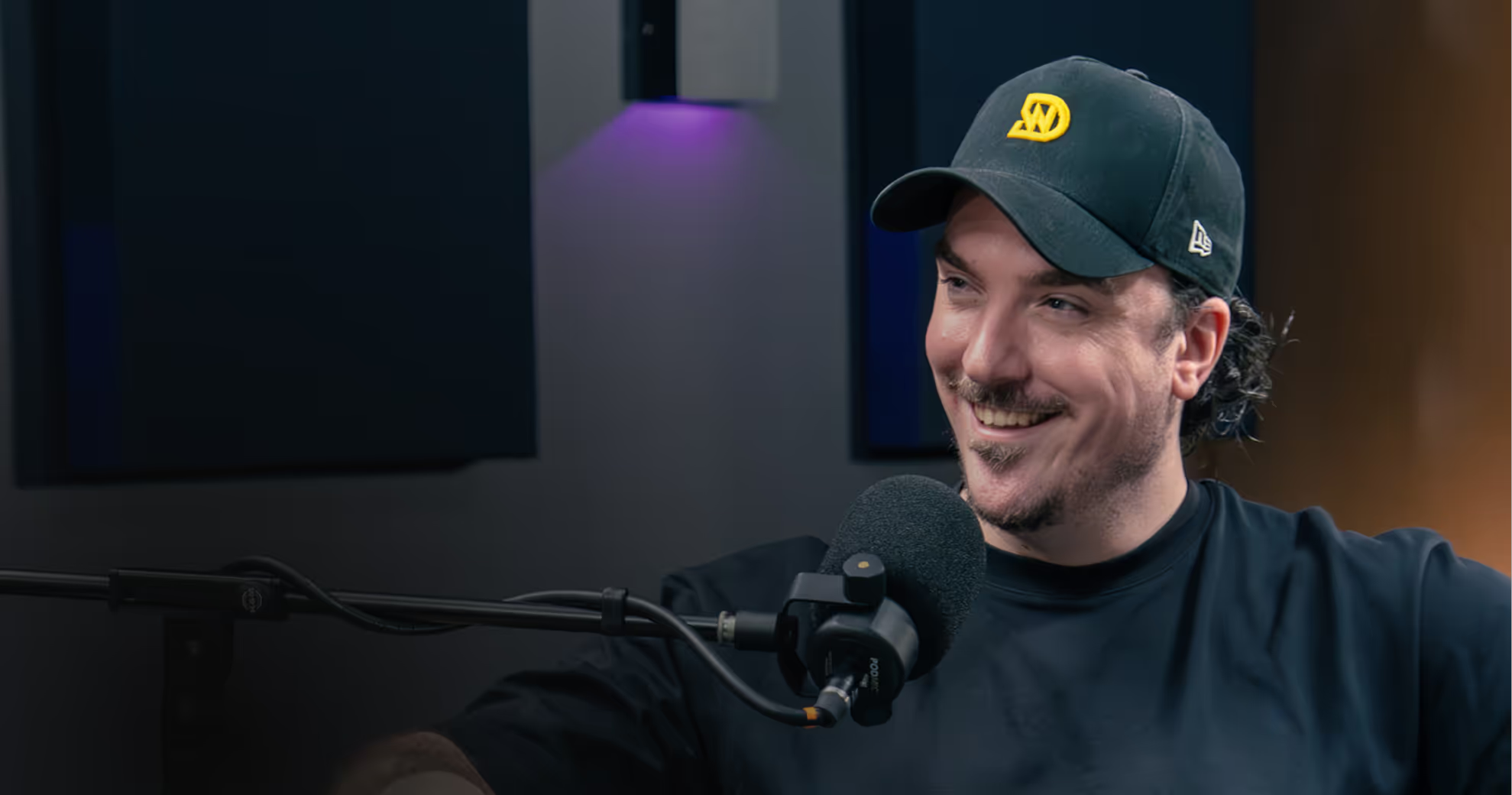
Work With Me
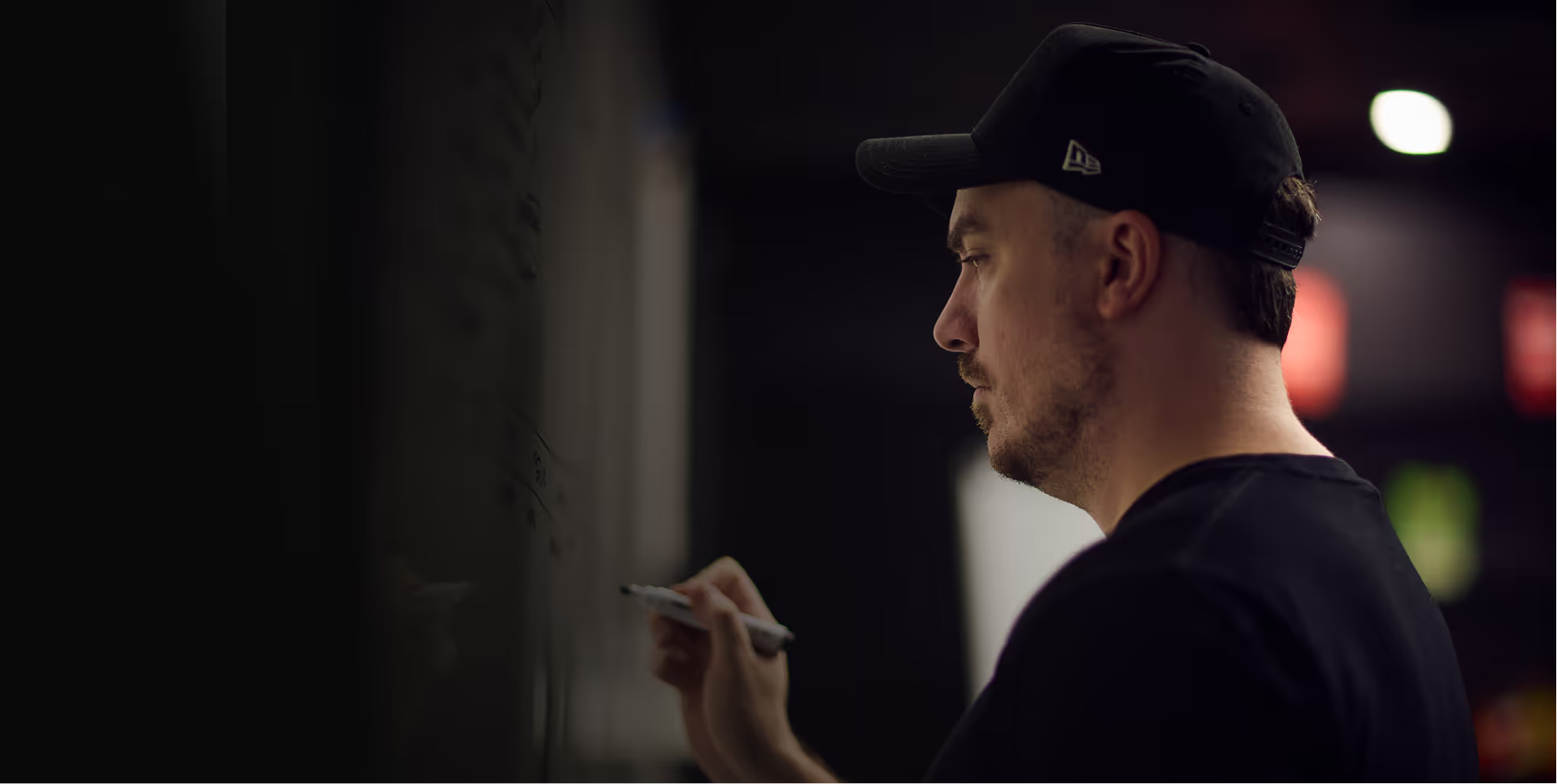
Enquire With Dain’s Team
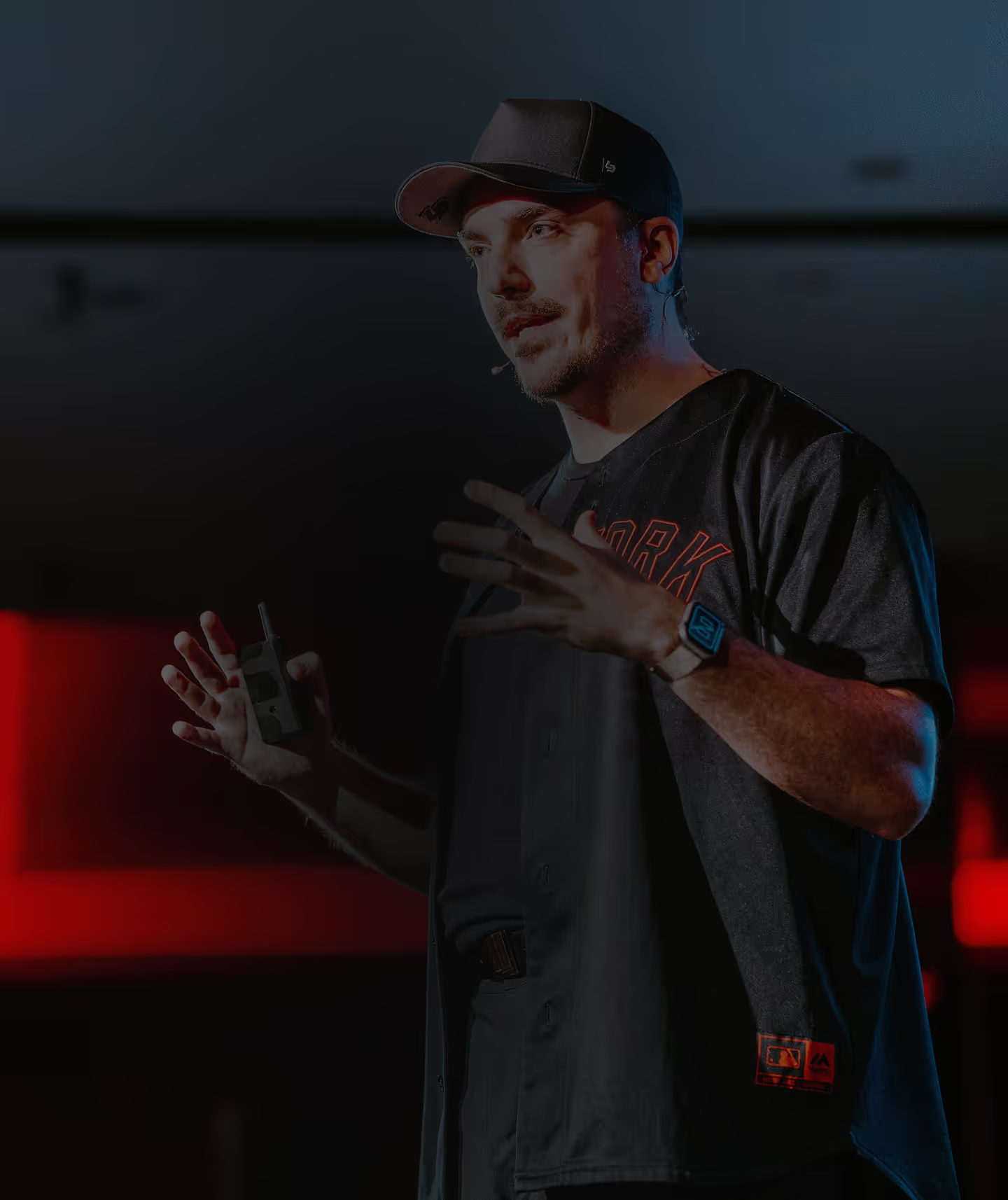
Enquire For Speaking

Let's Get You Branded
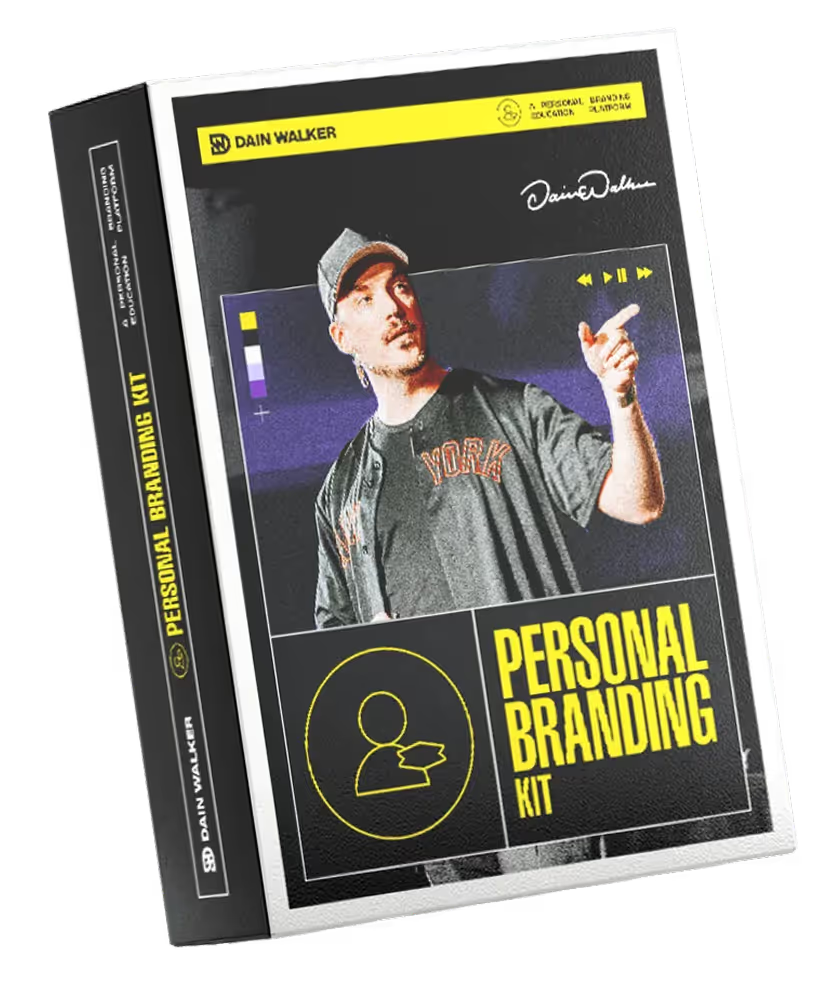
Apply to be a guest
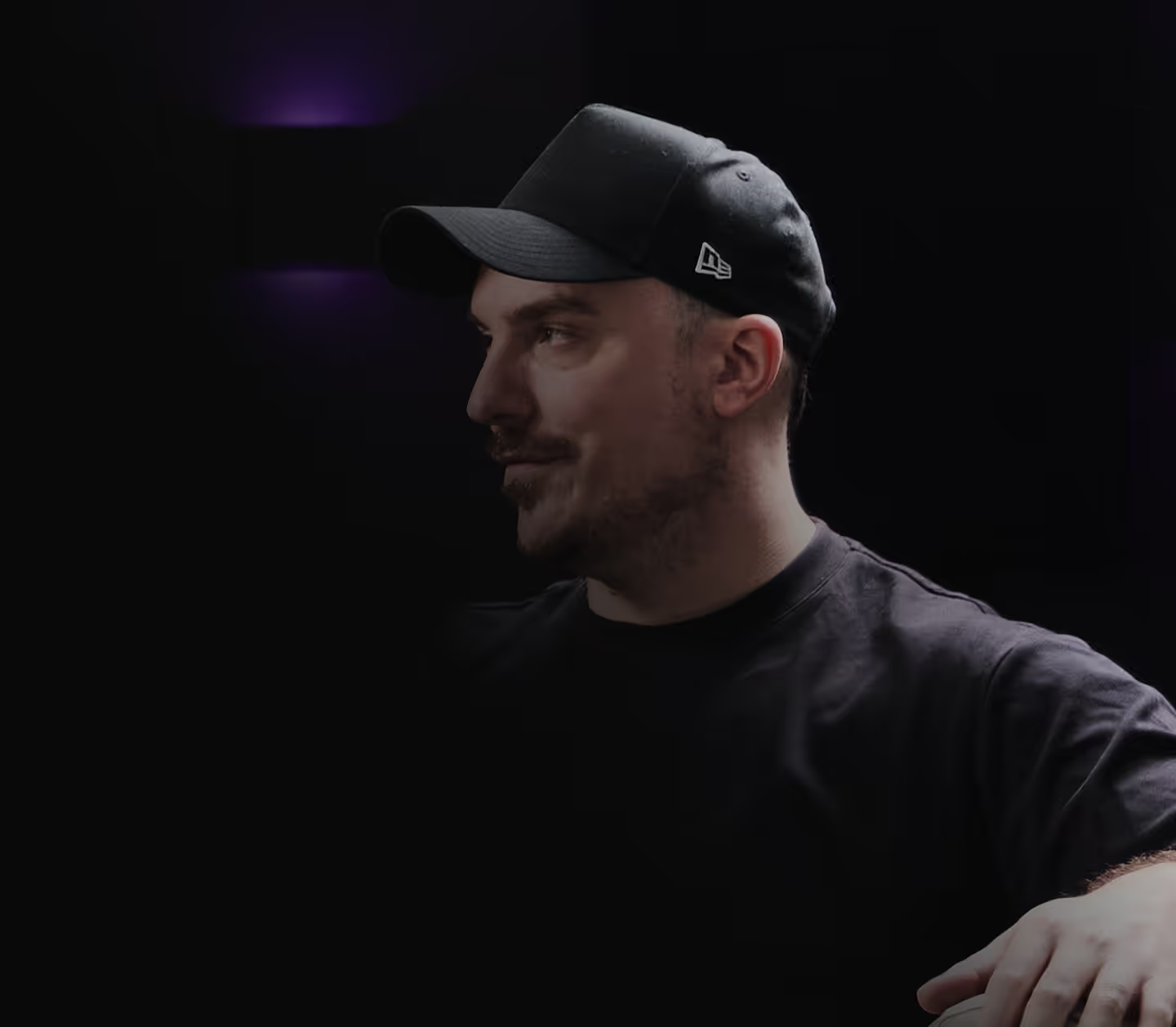
Dive into insights from industry leaders and experts.

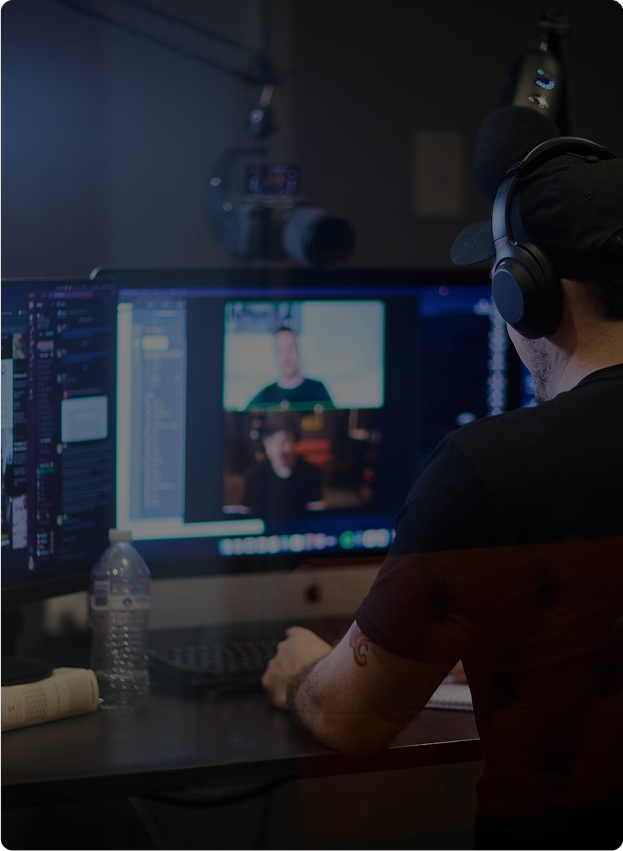

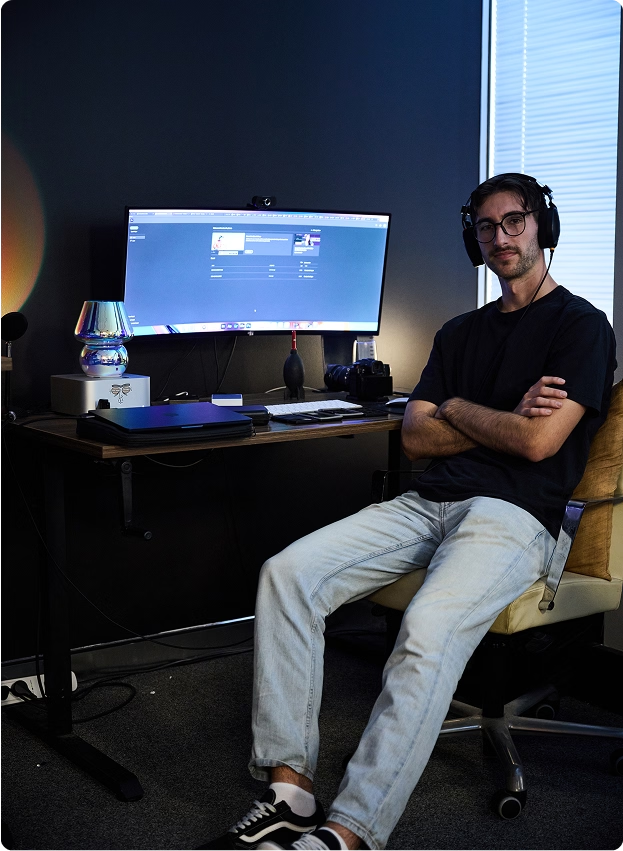
Stream now
Dive into expert advice and industry trends.
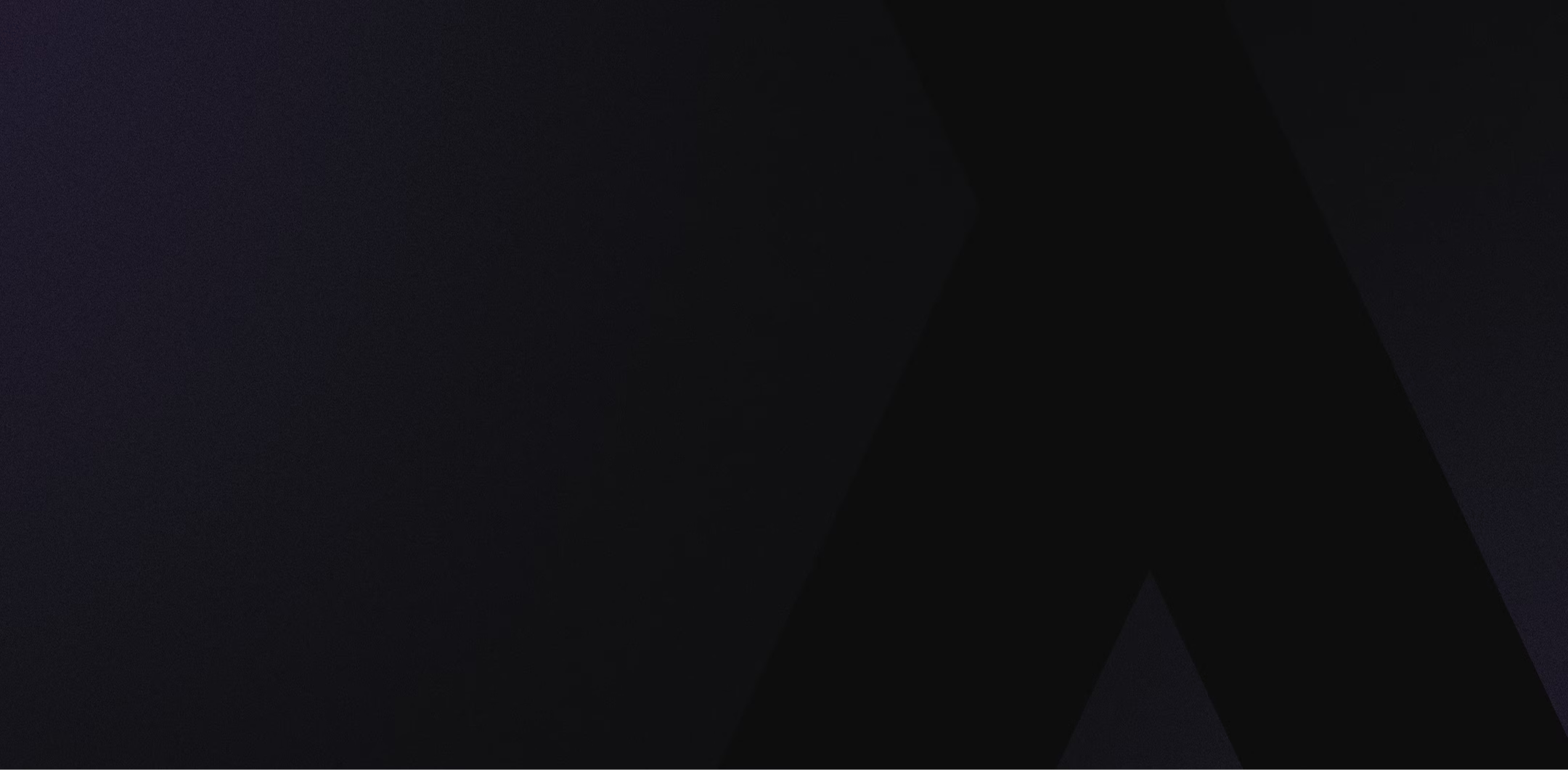


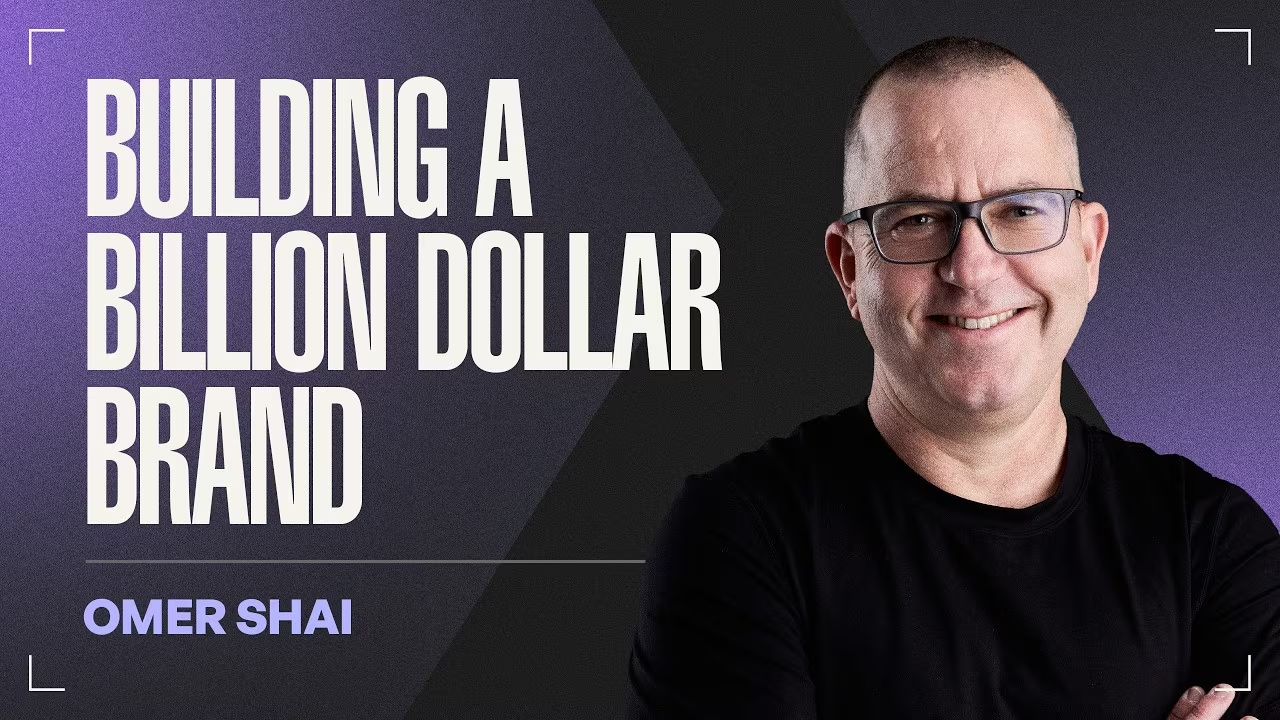
%20(1).avif)
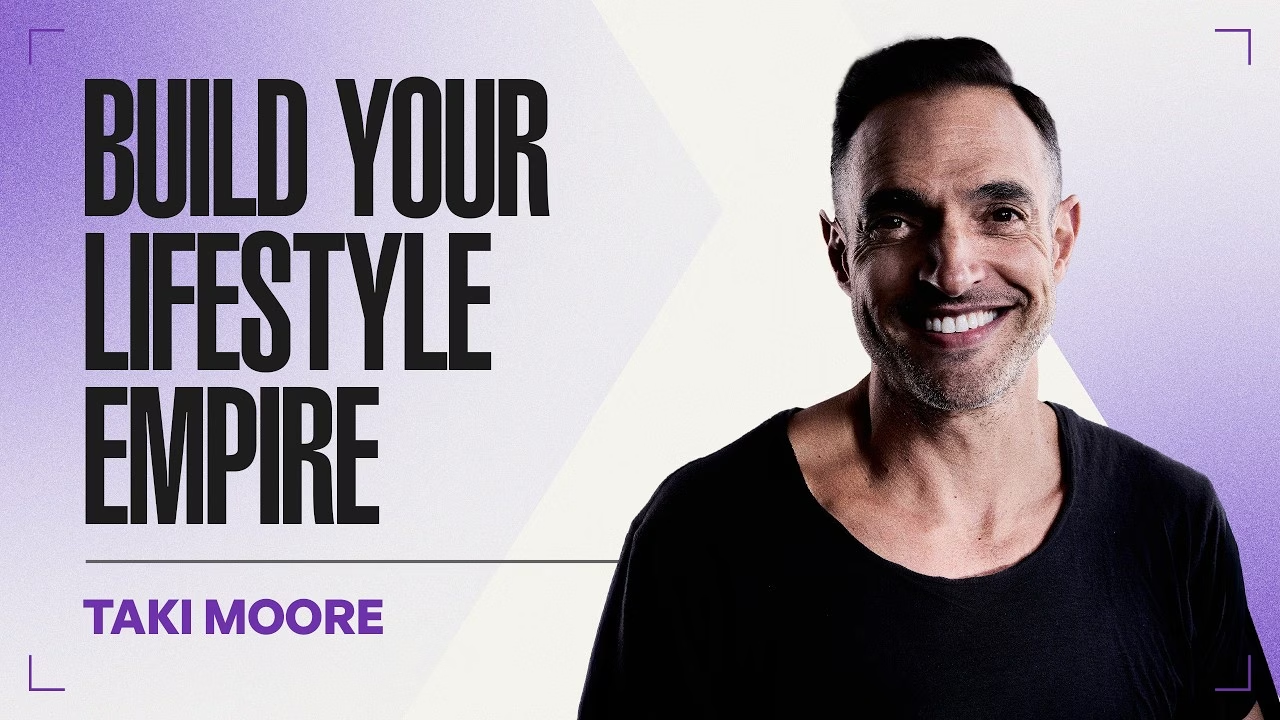
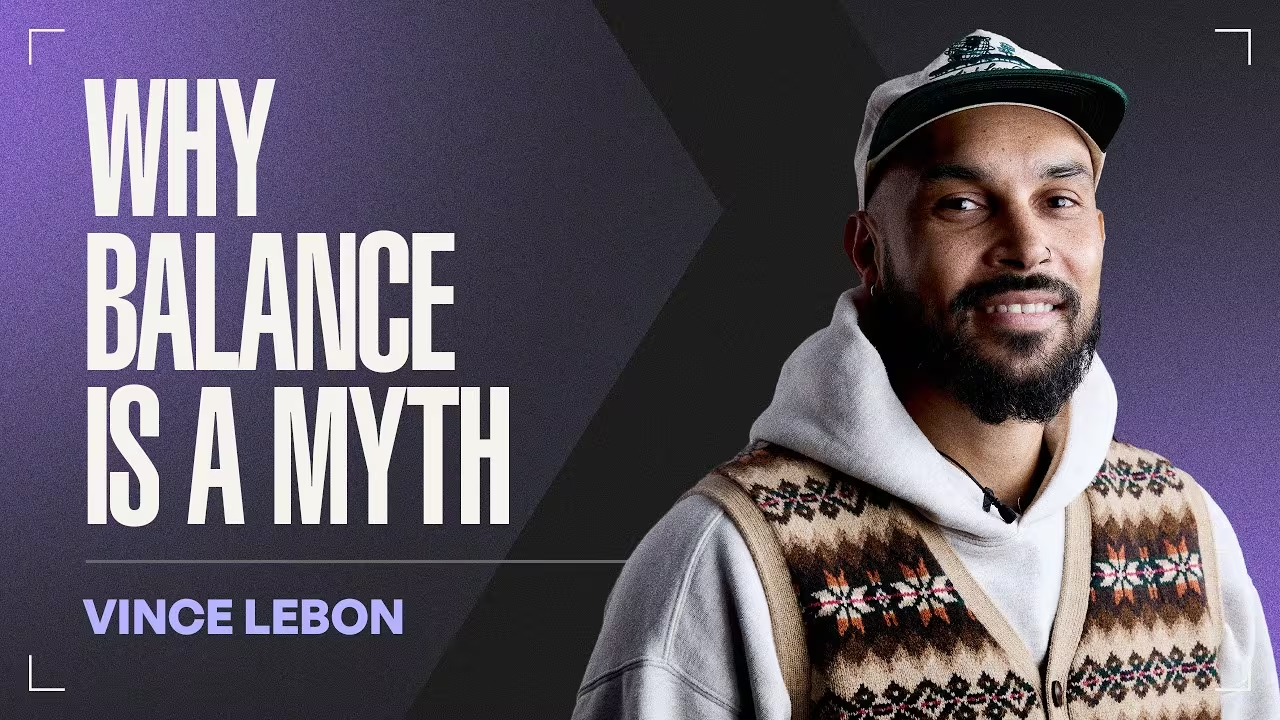



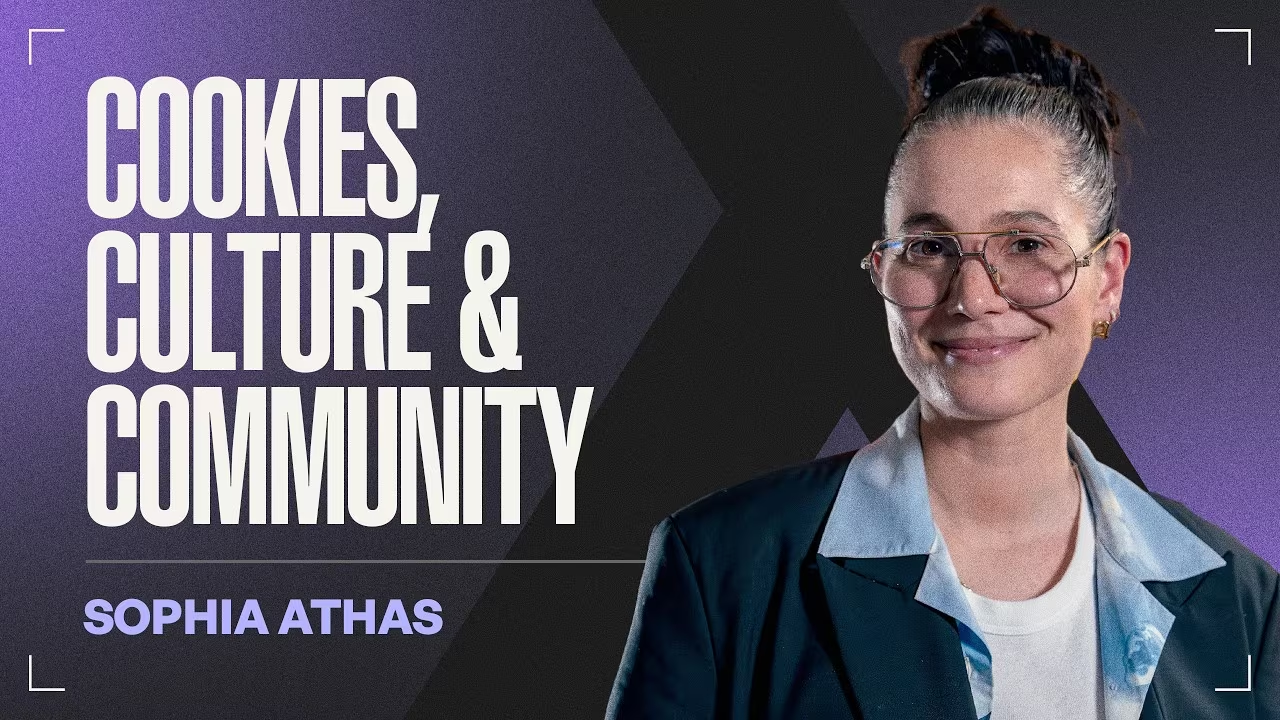

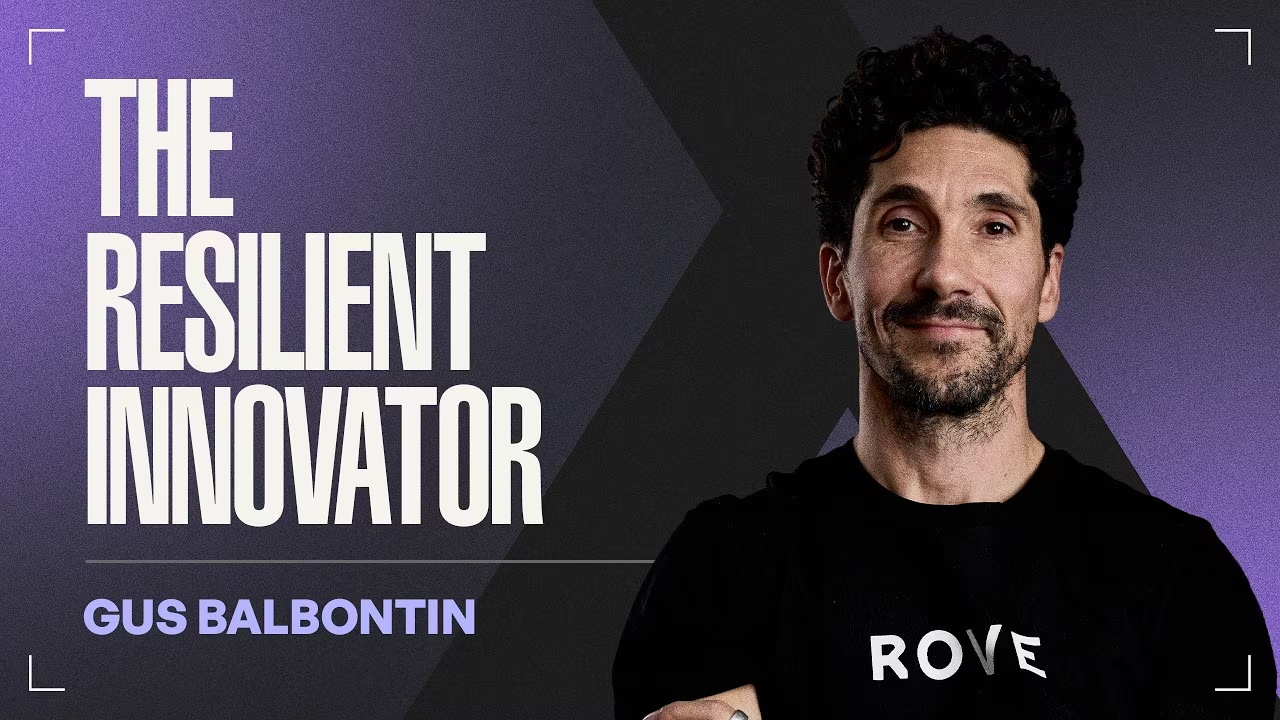



.avif)

